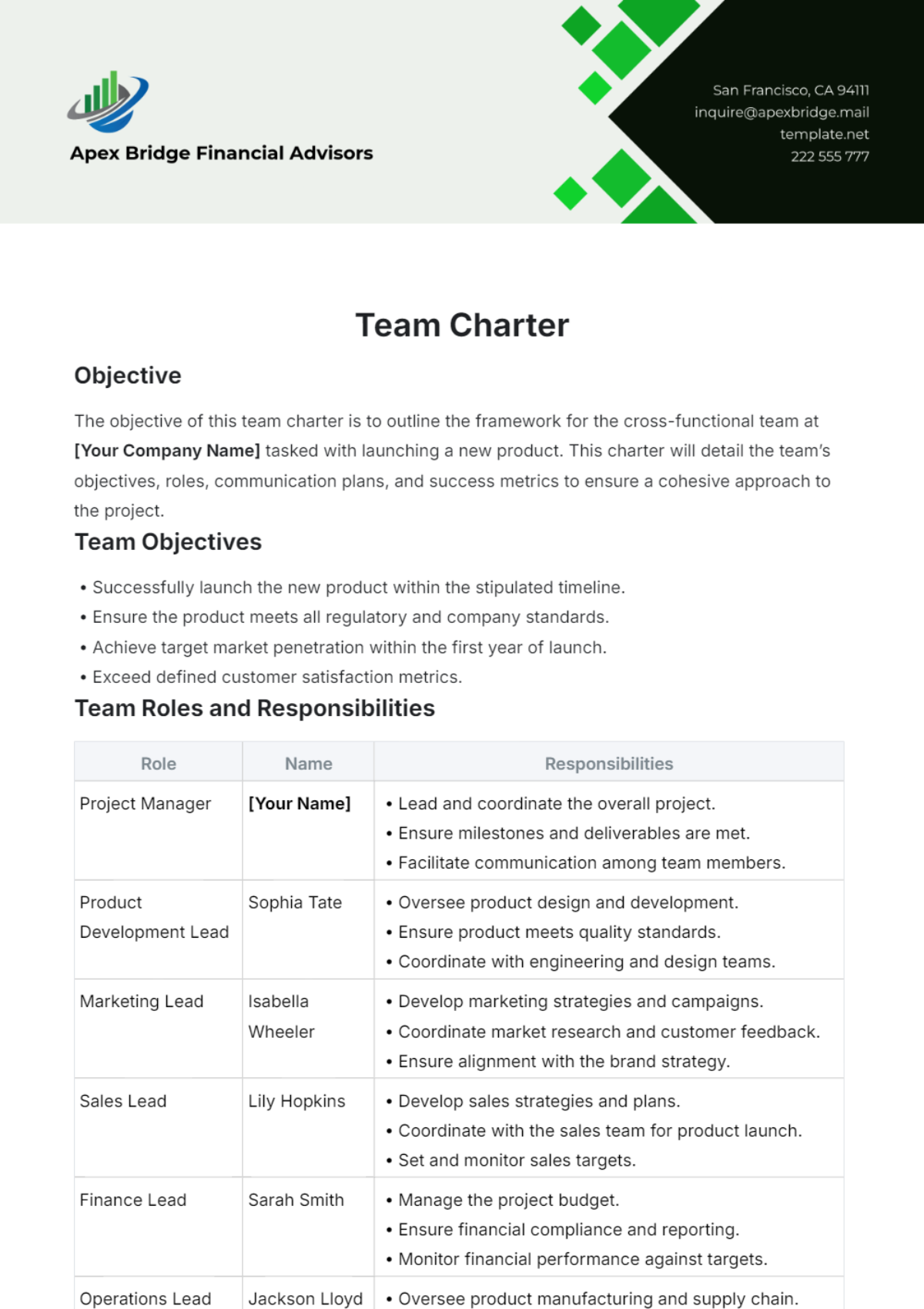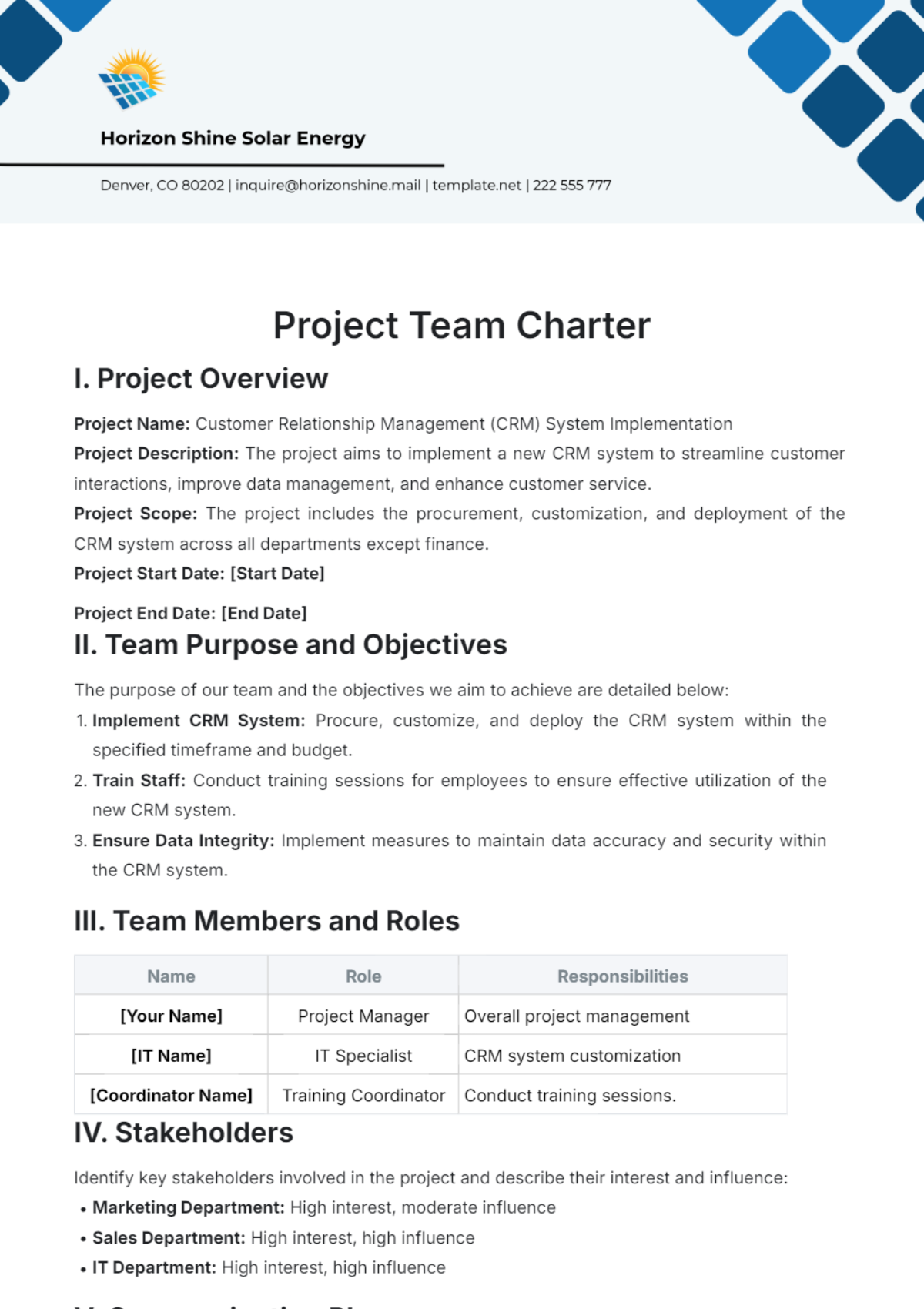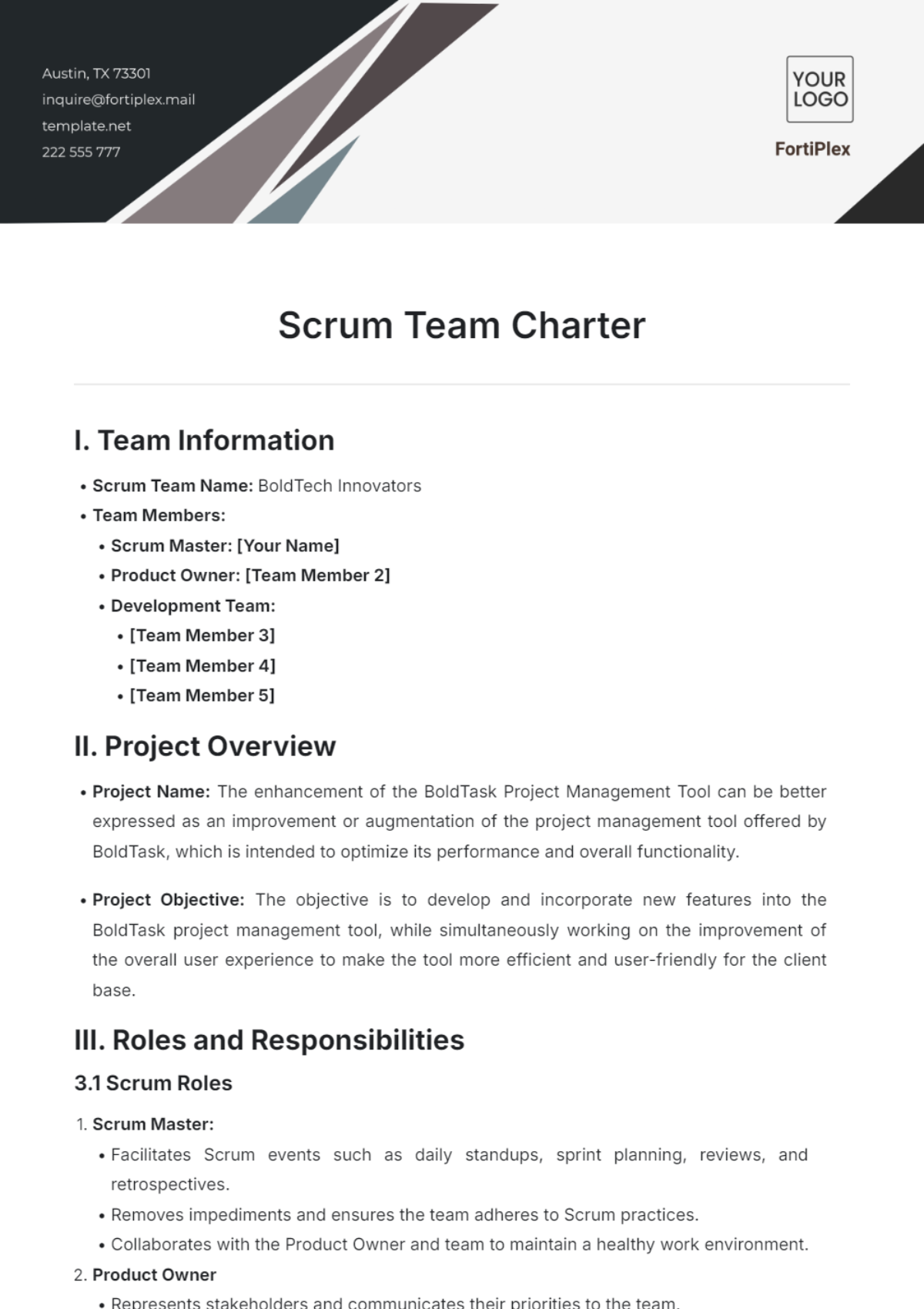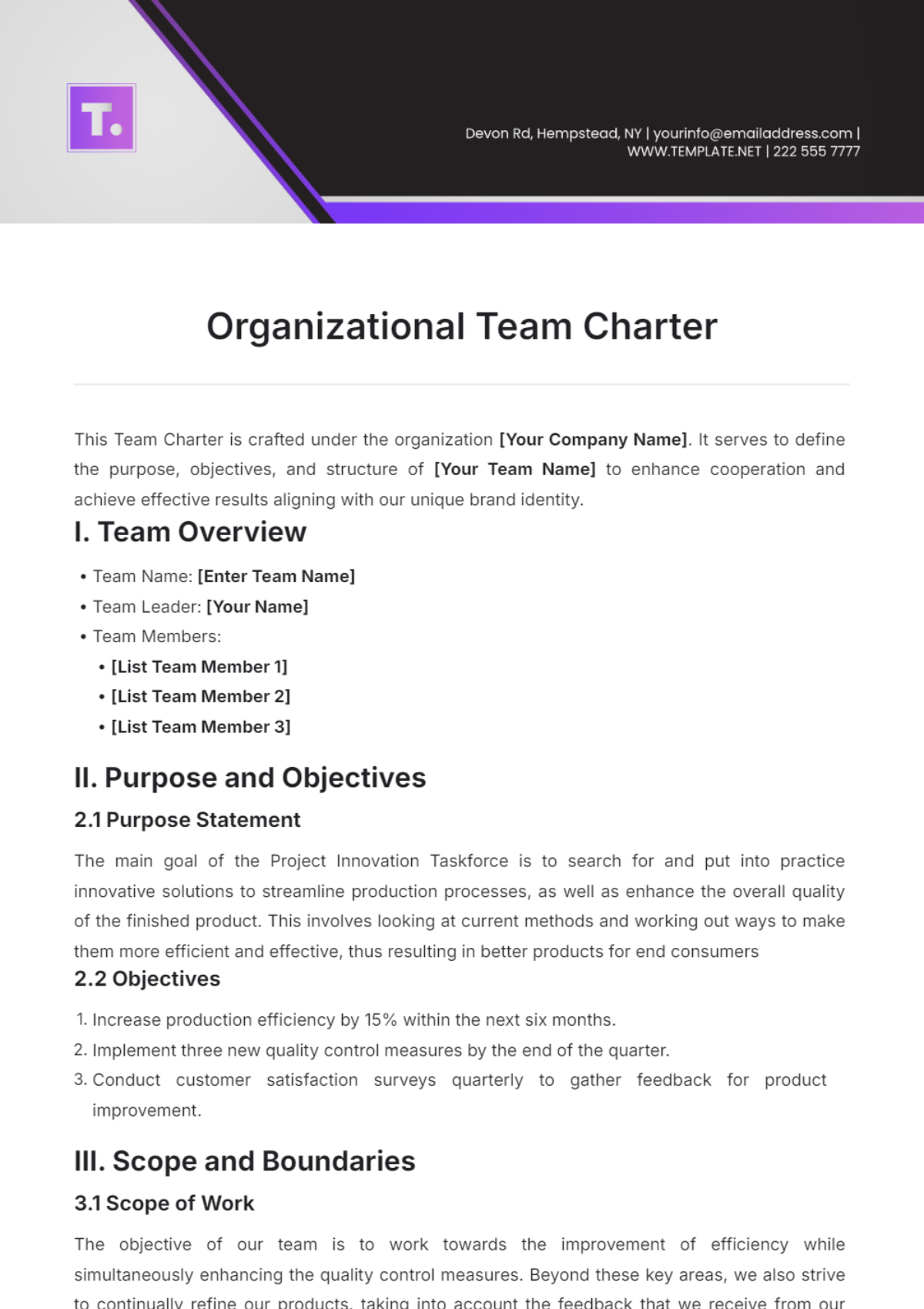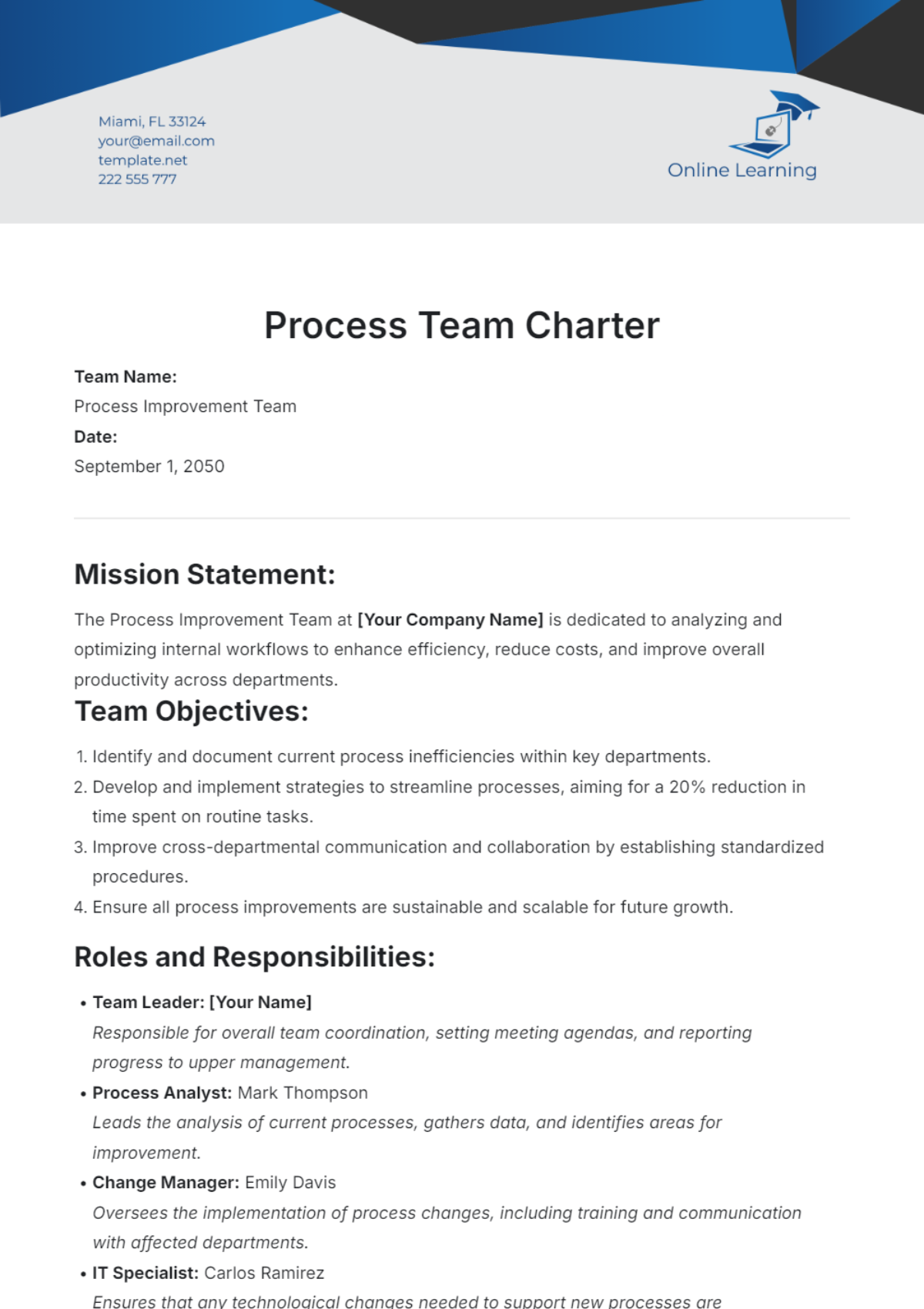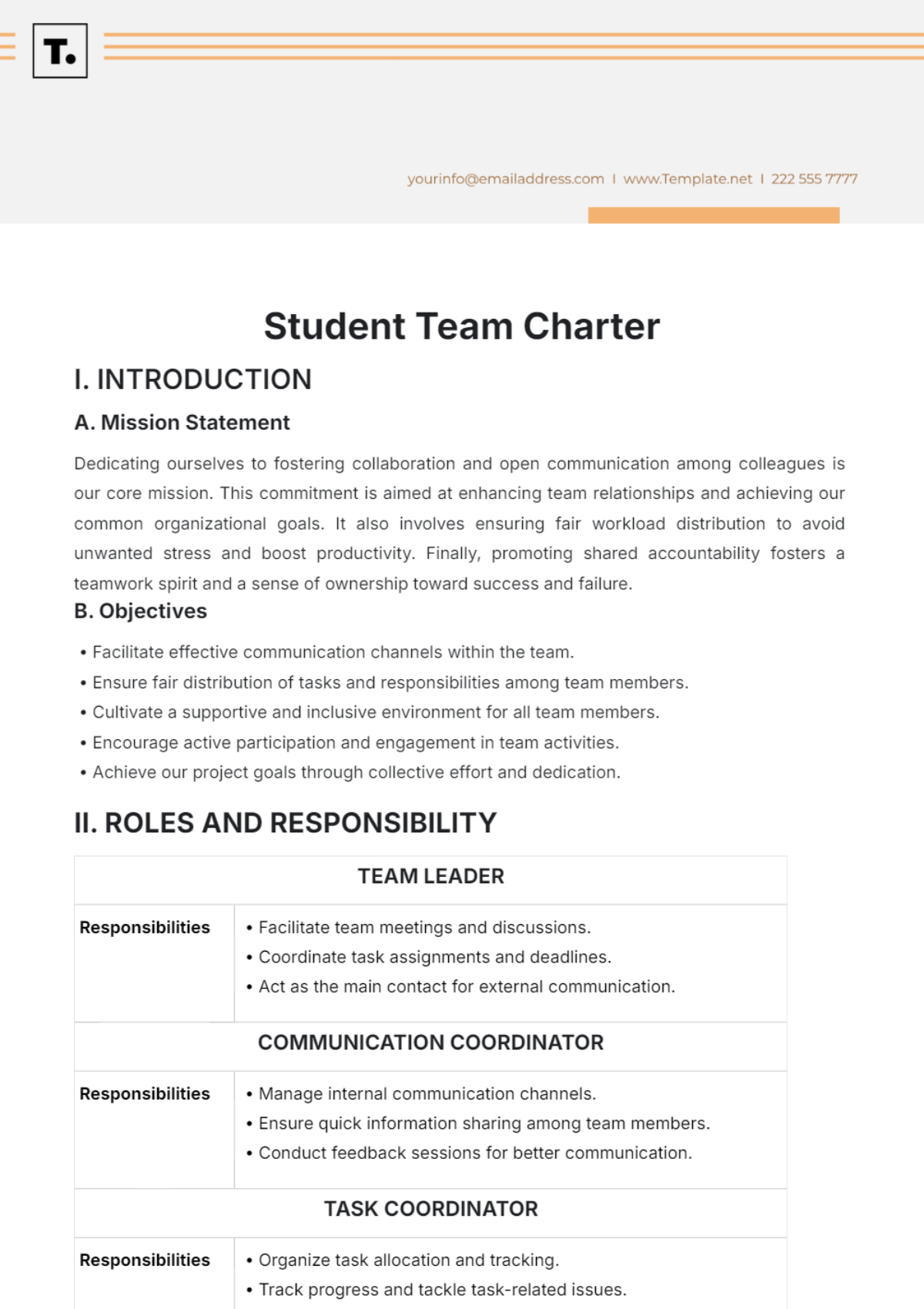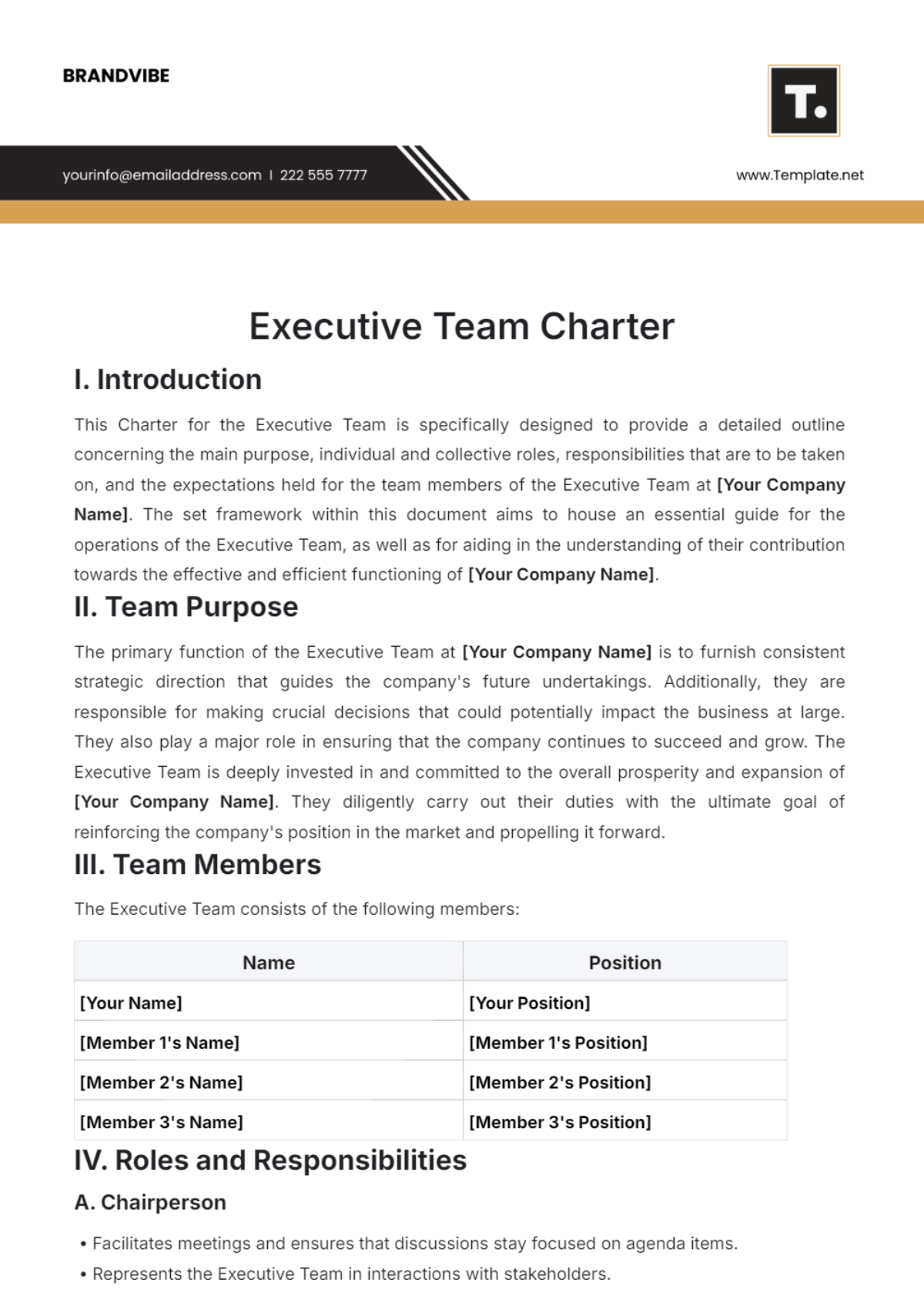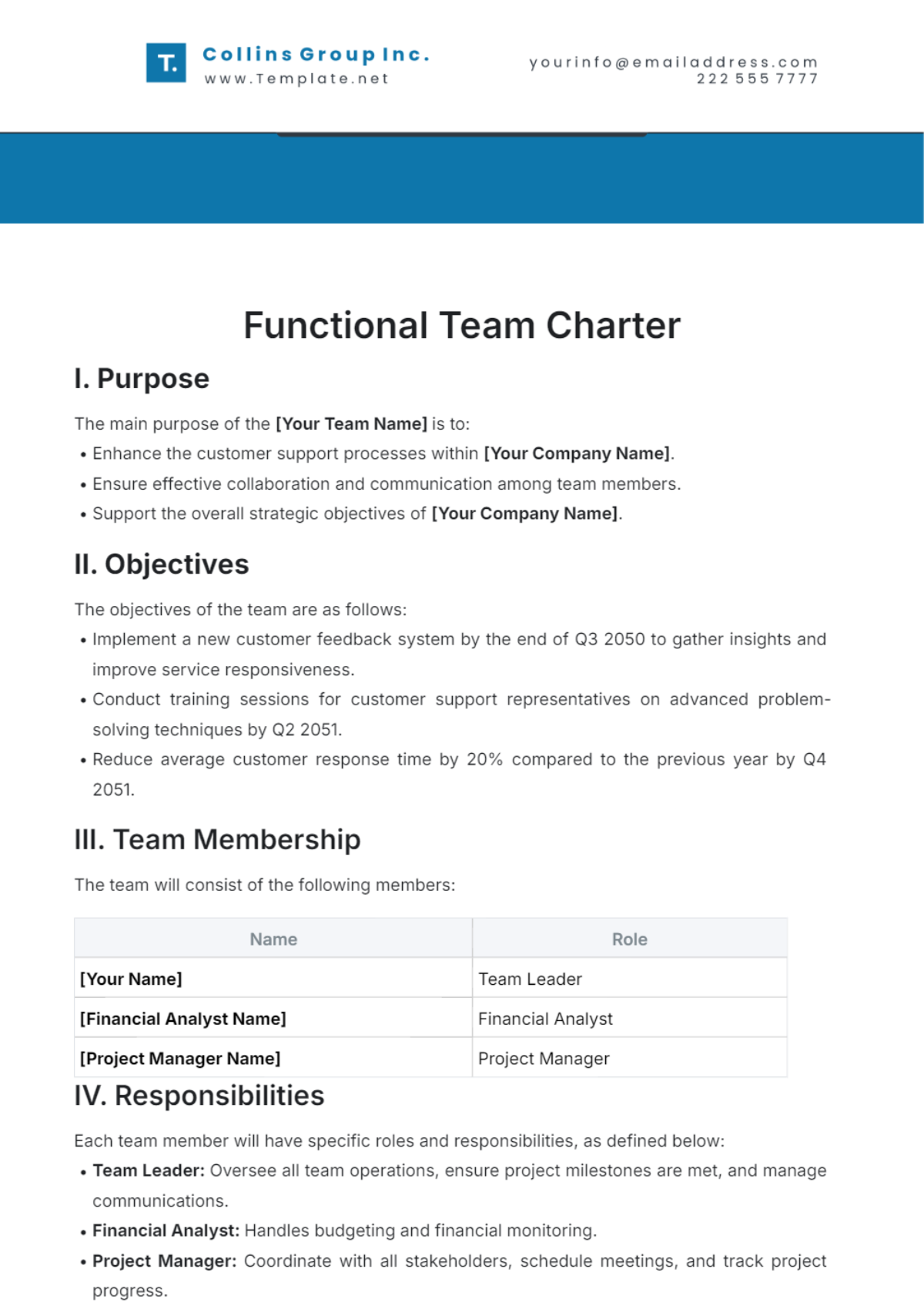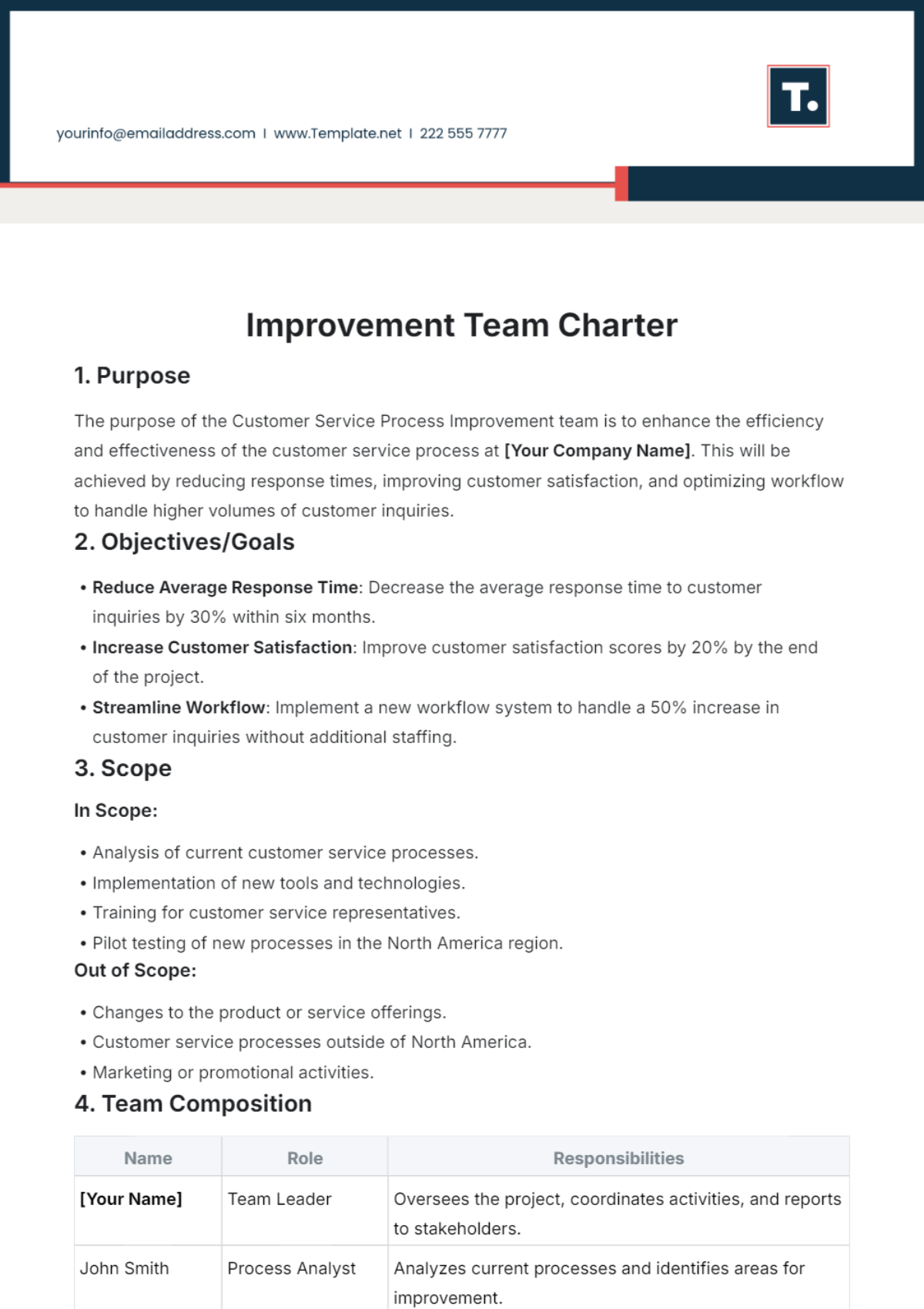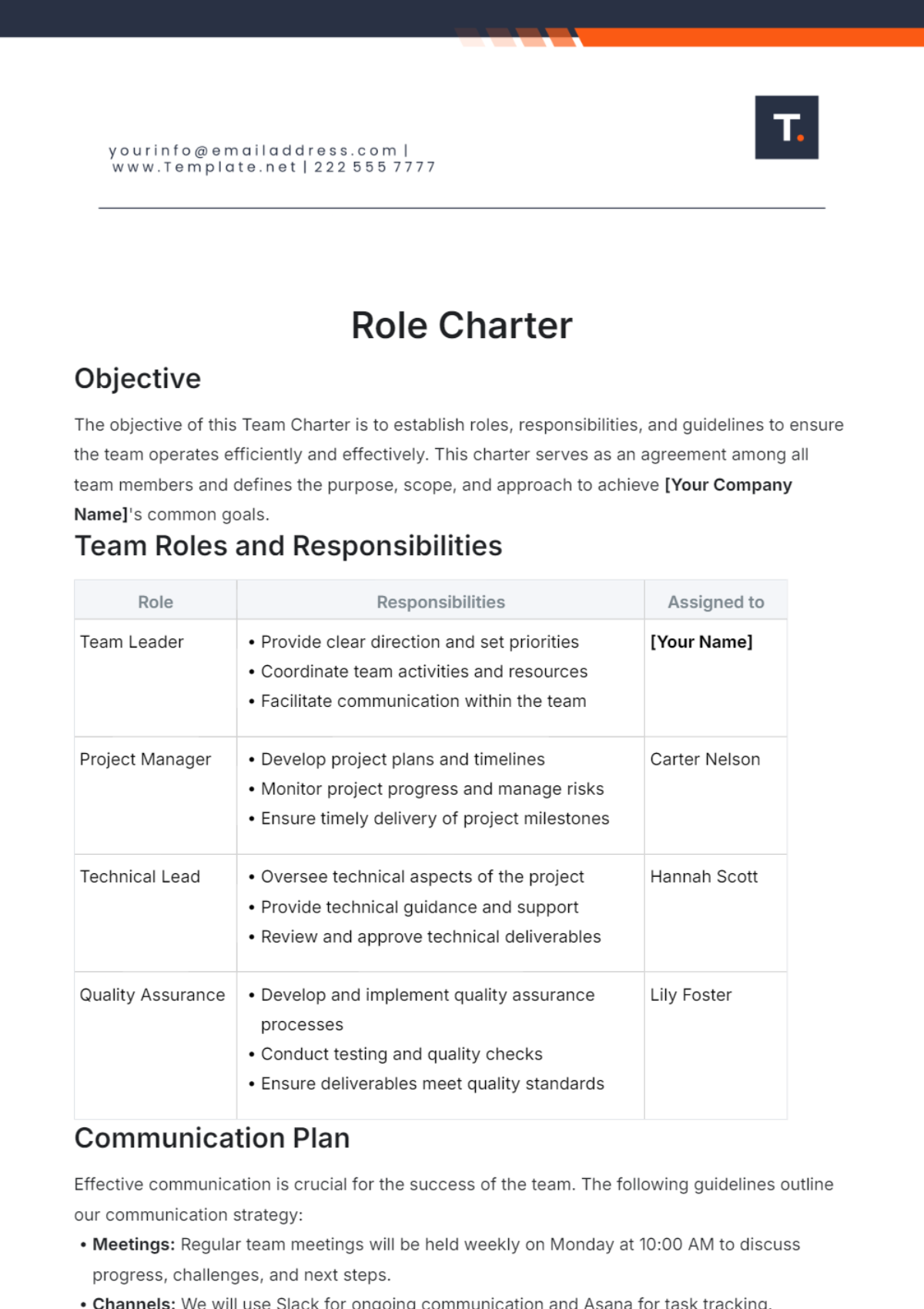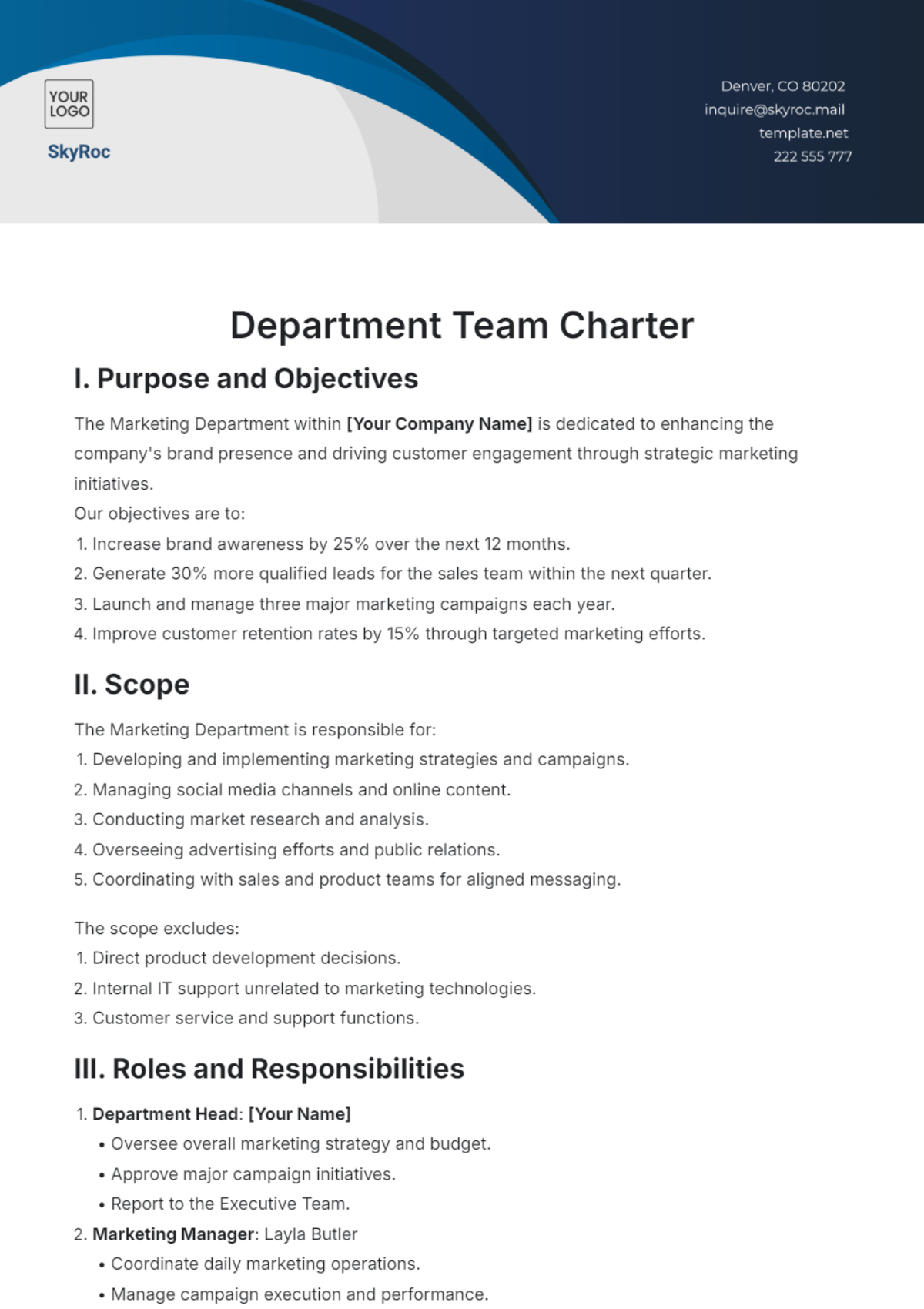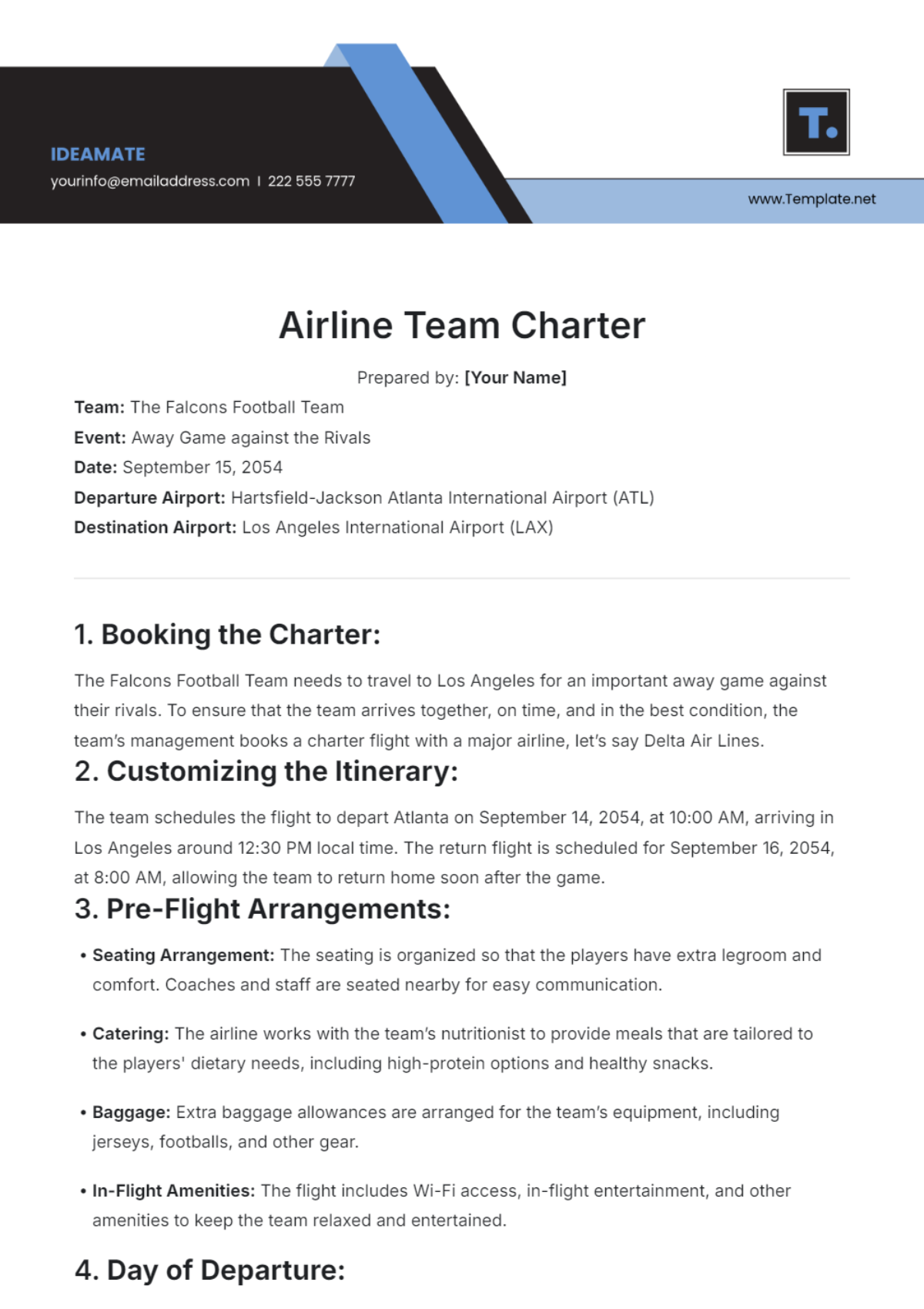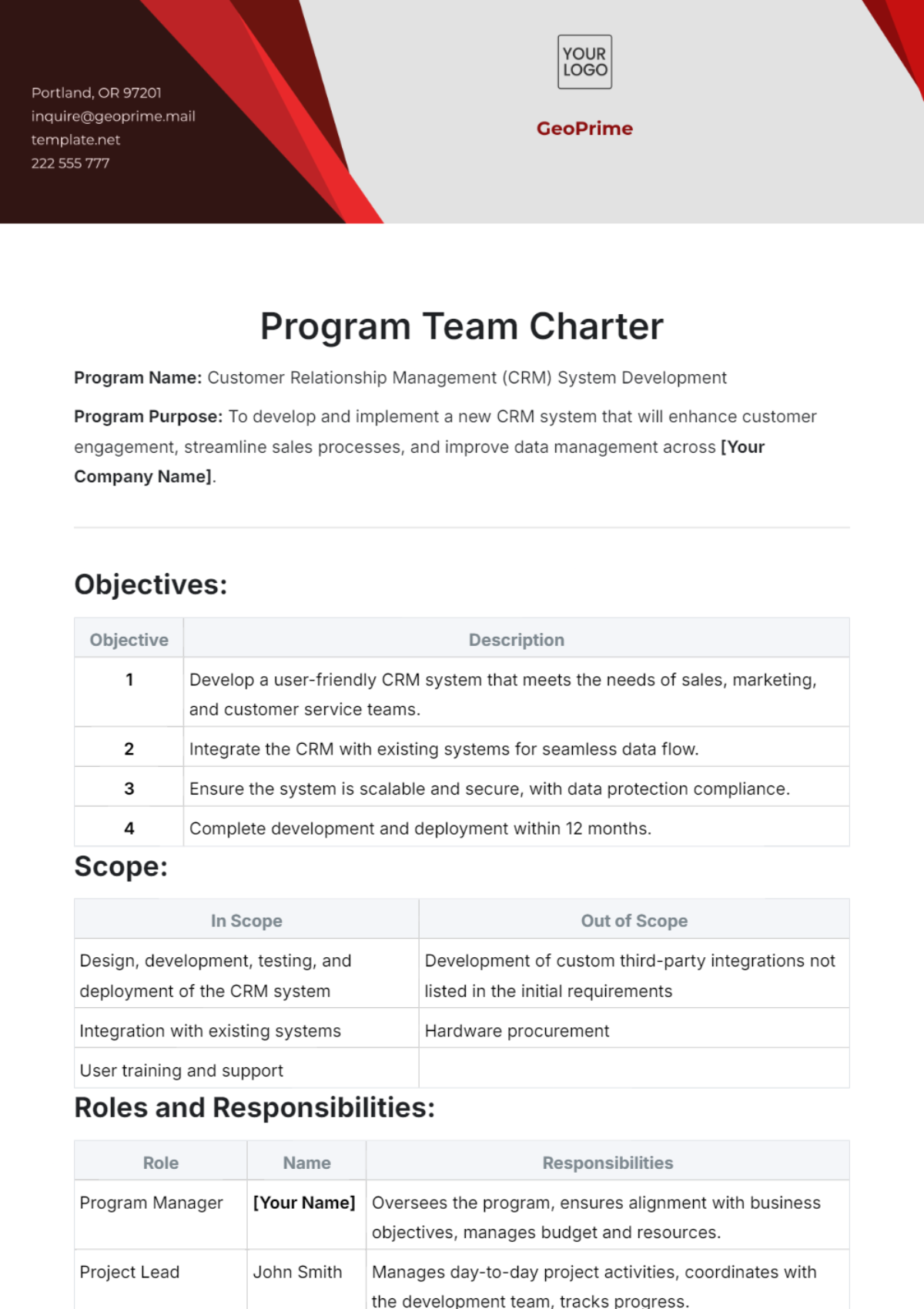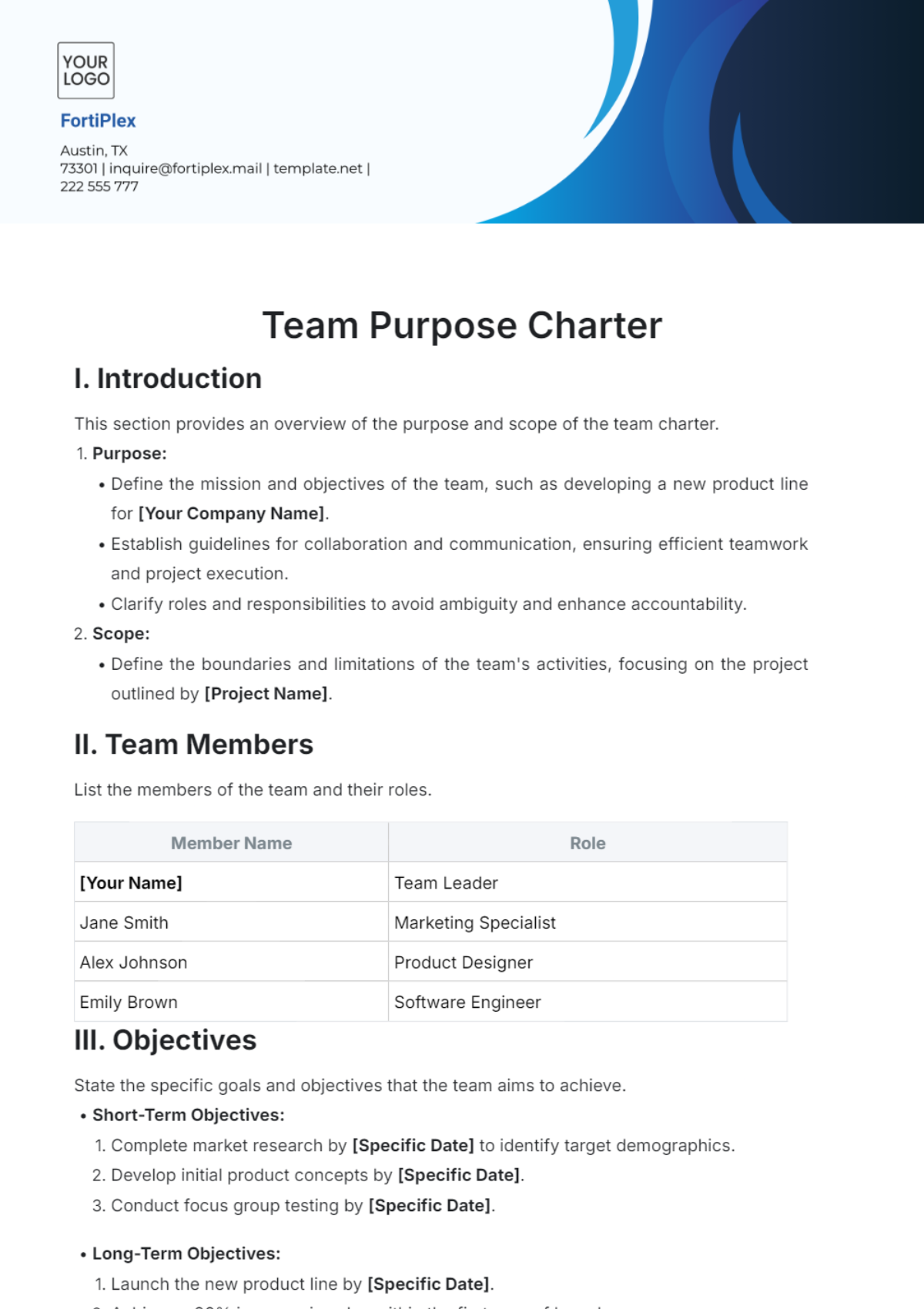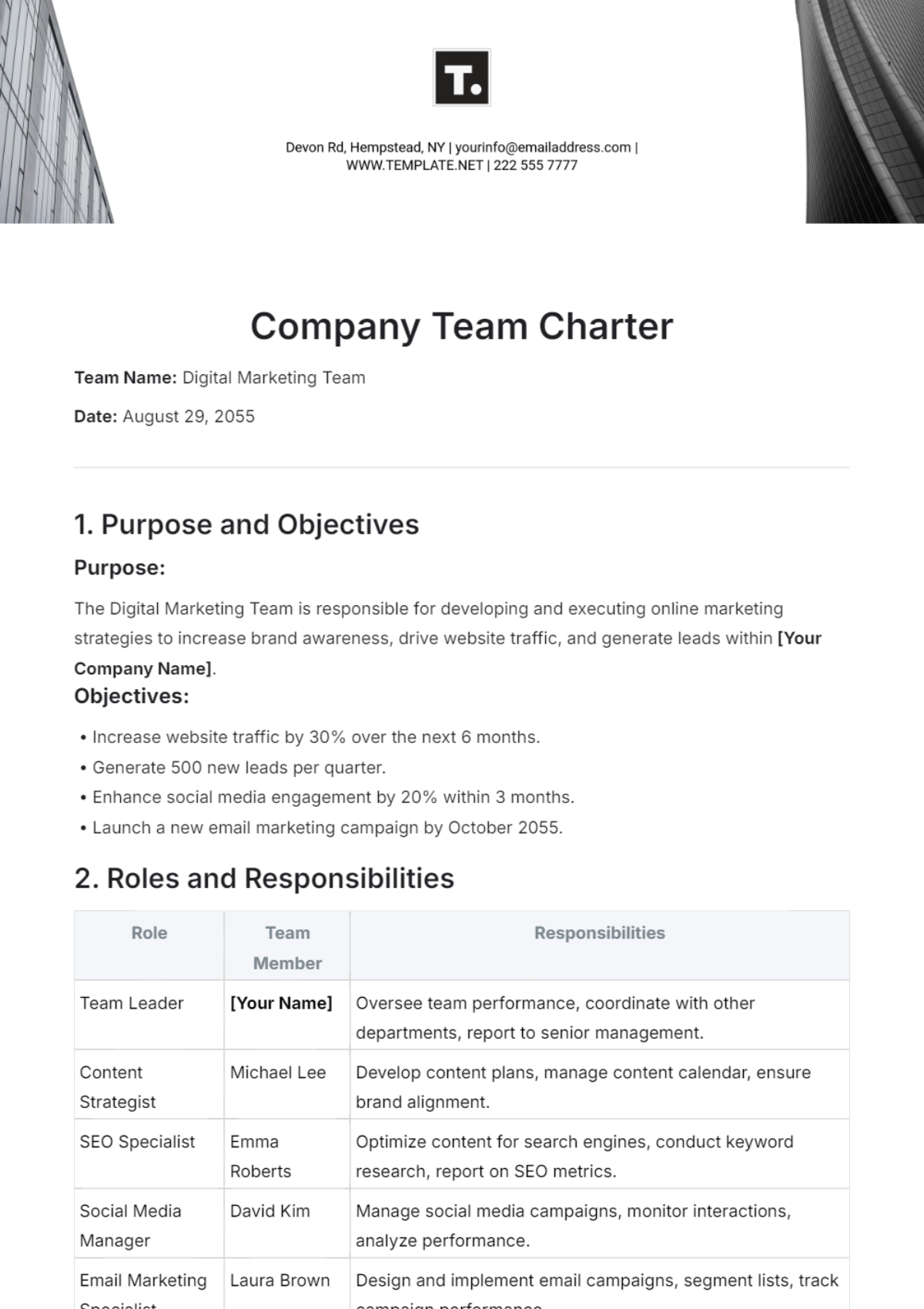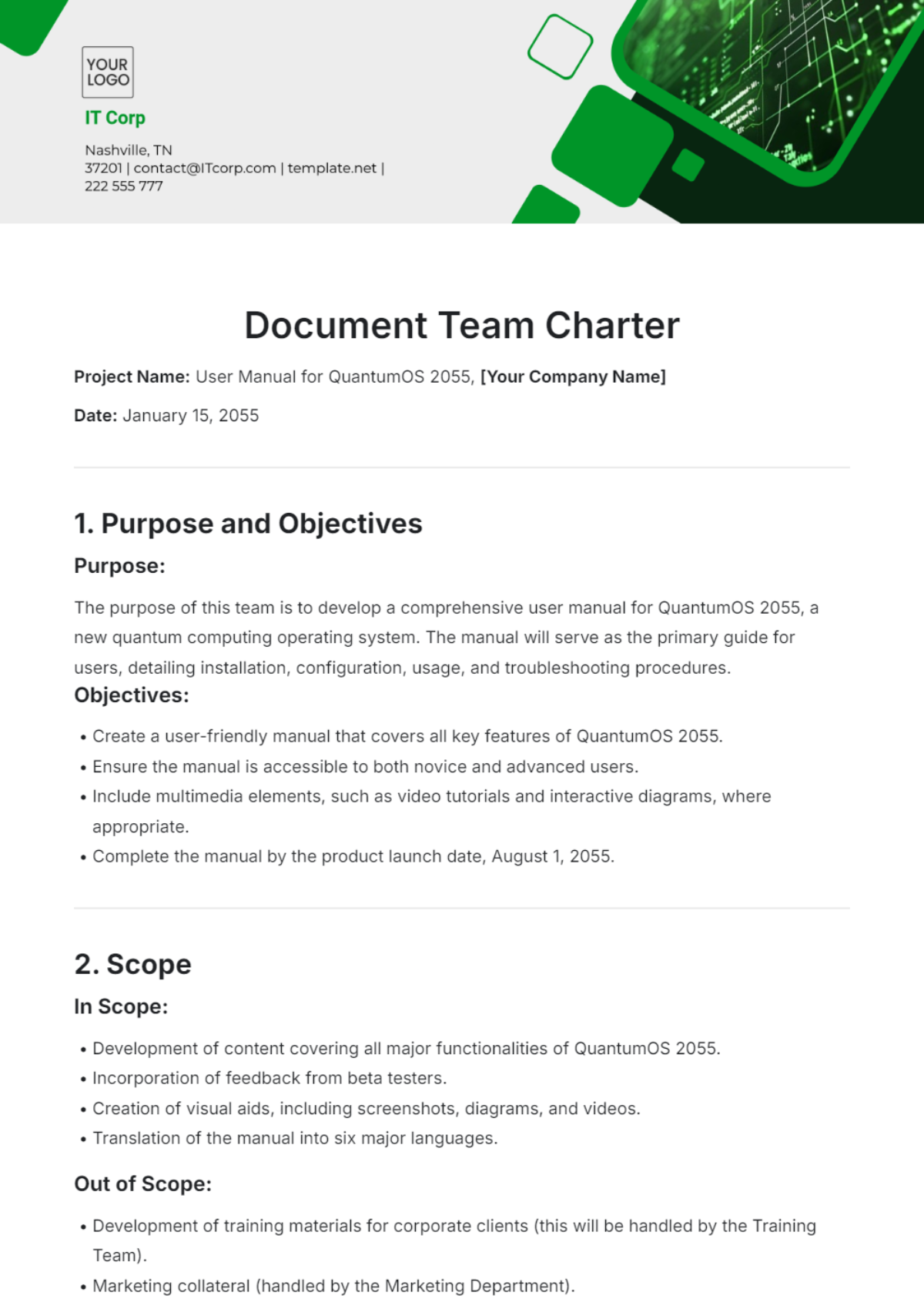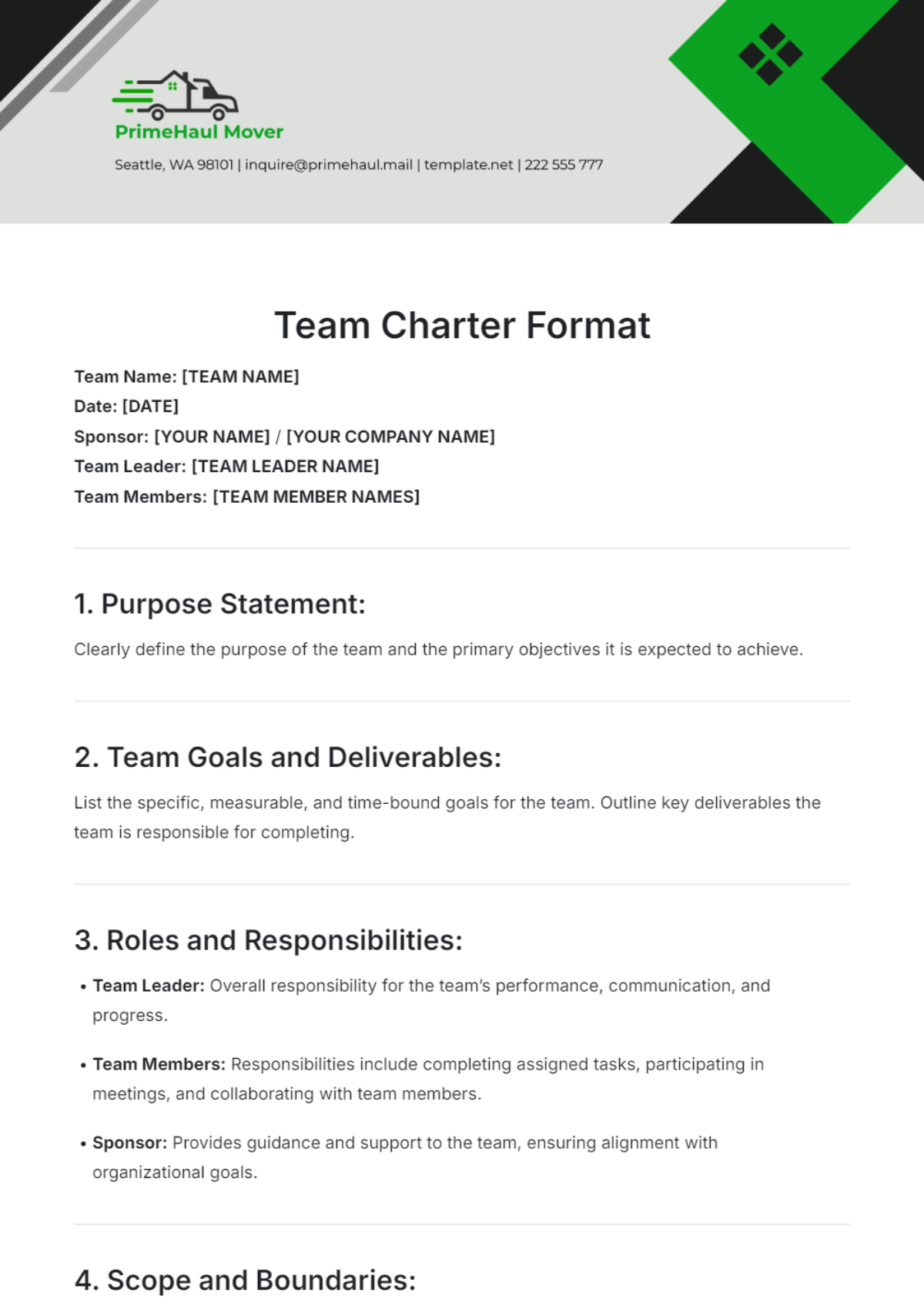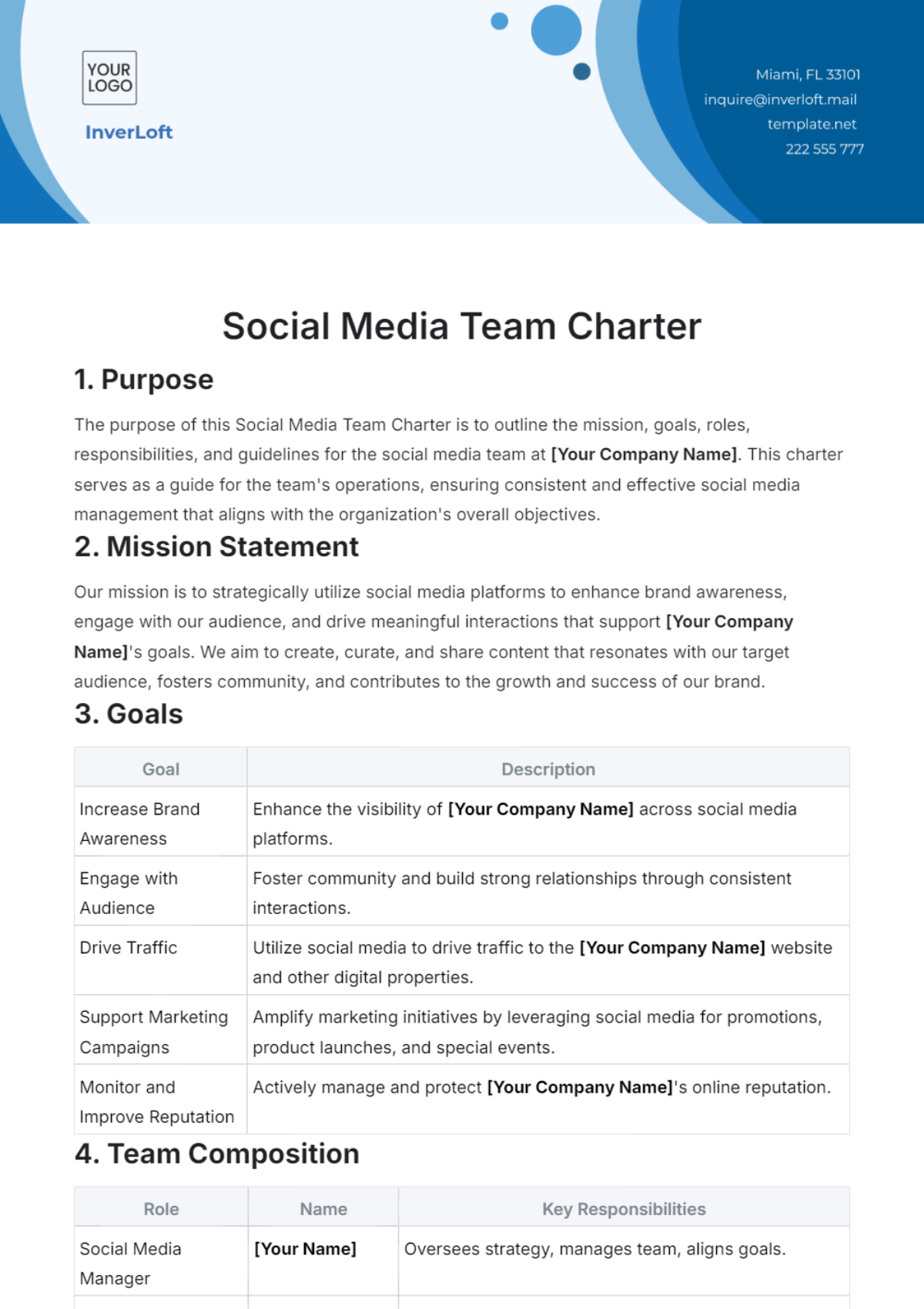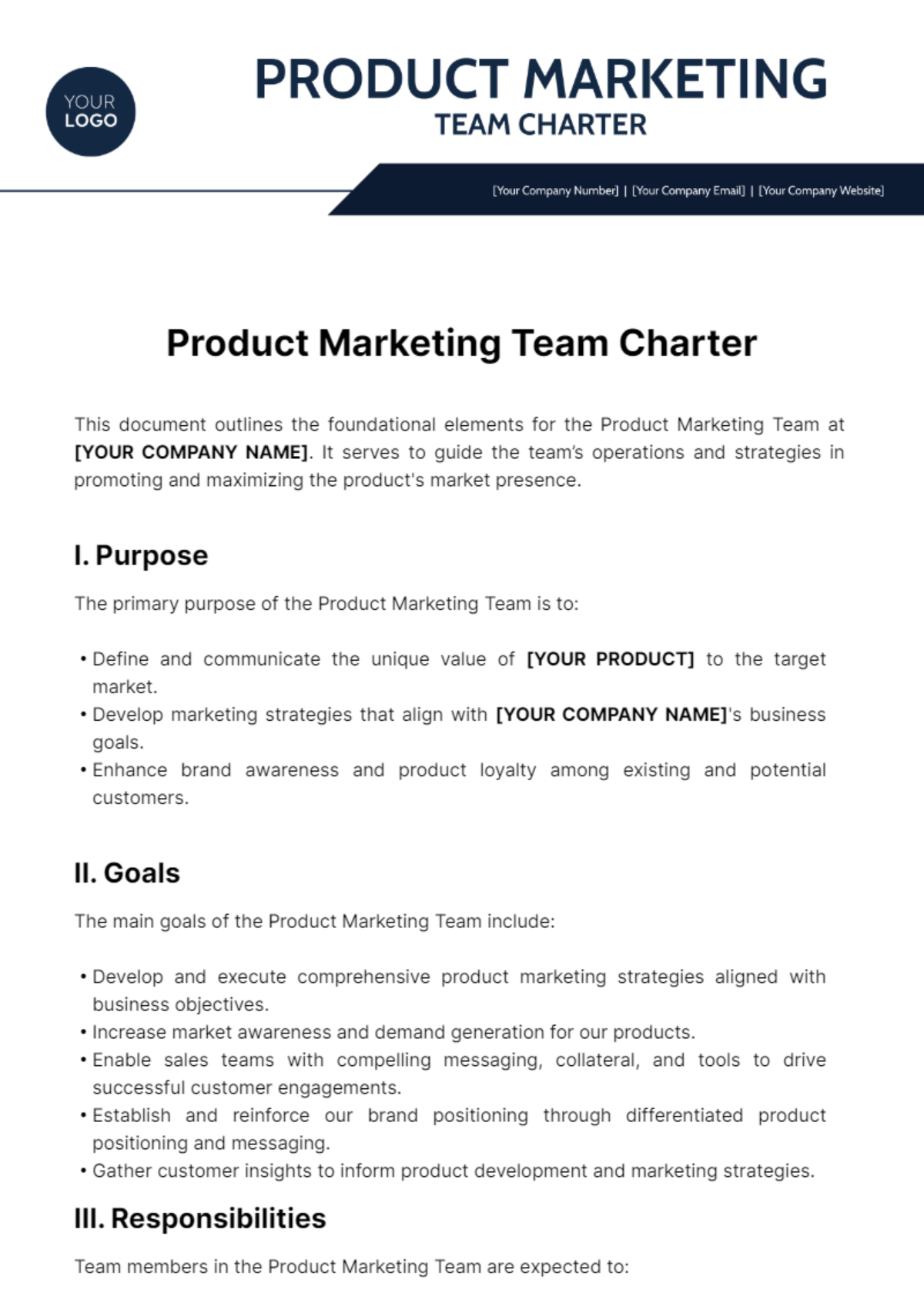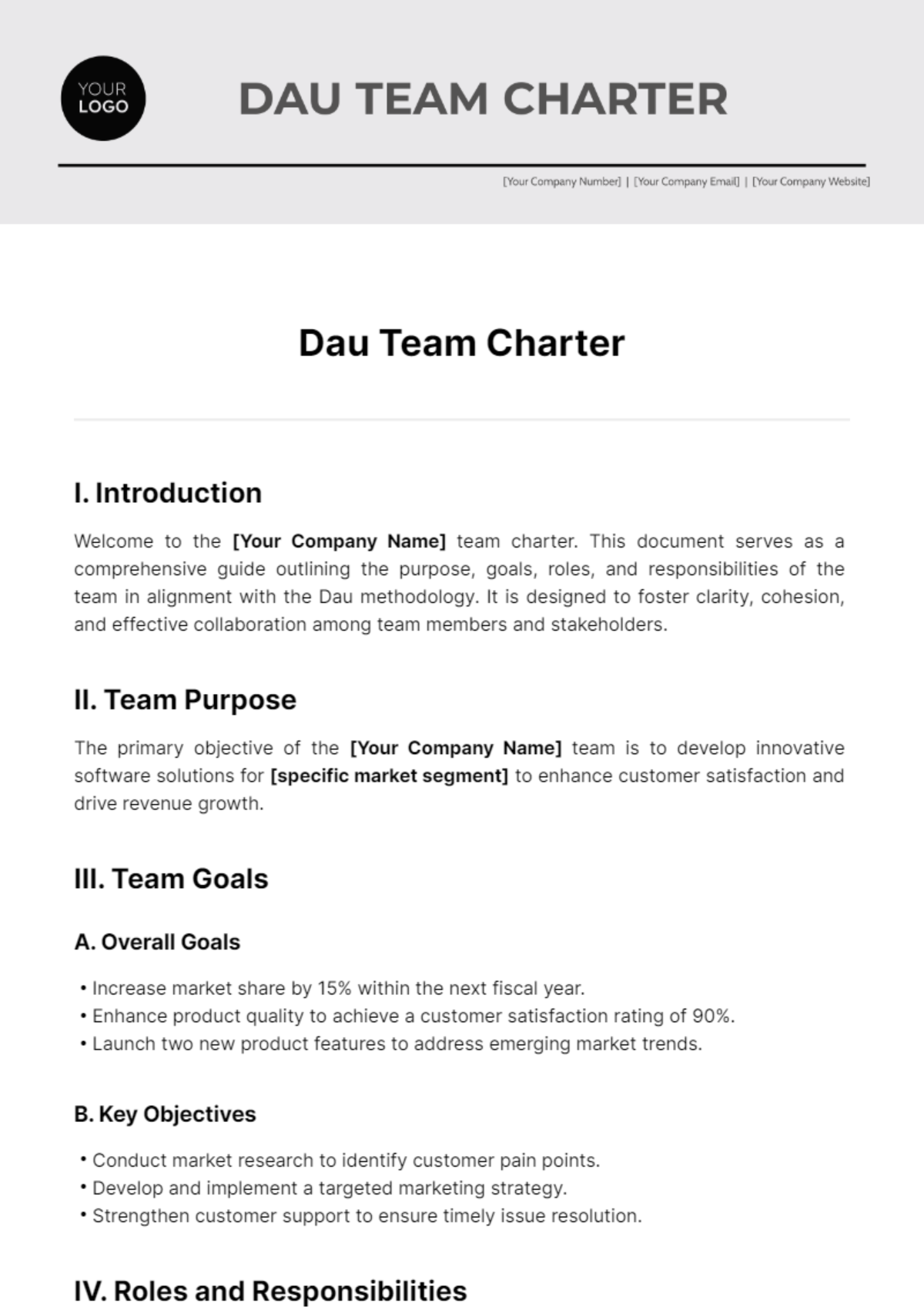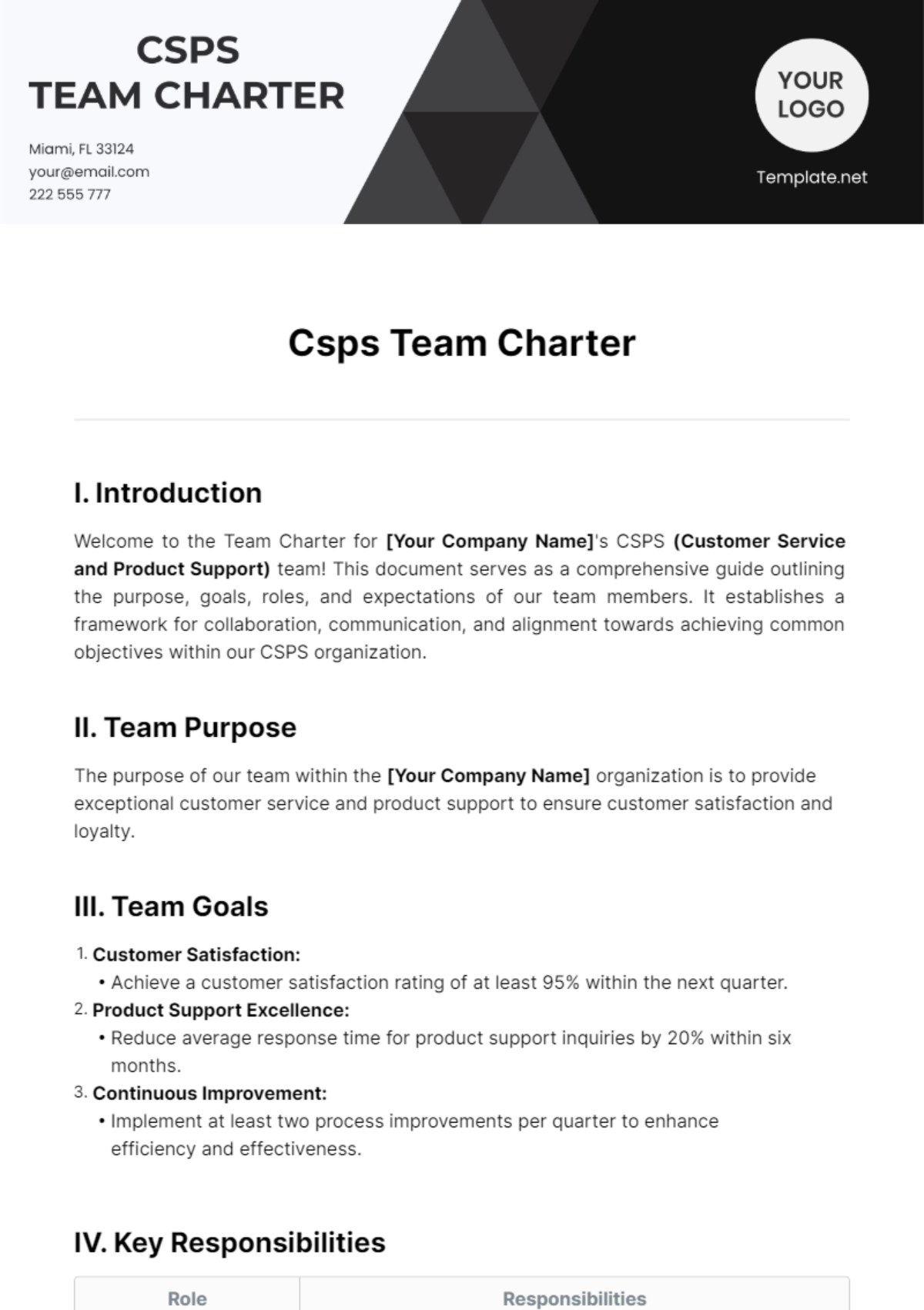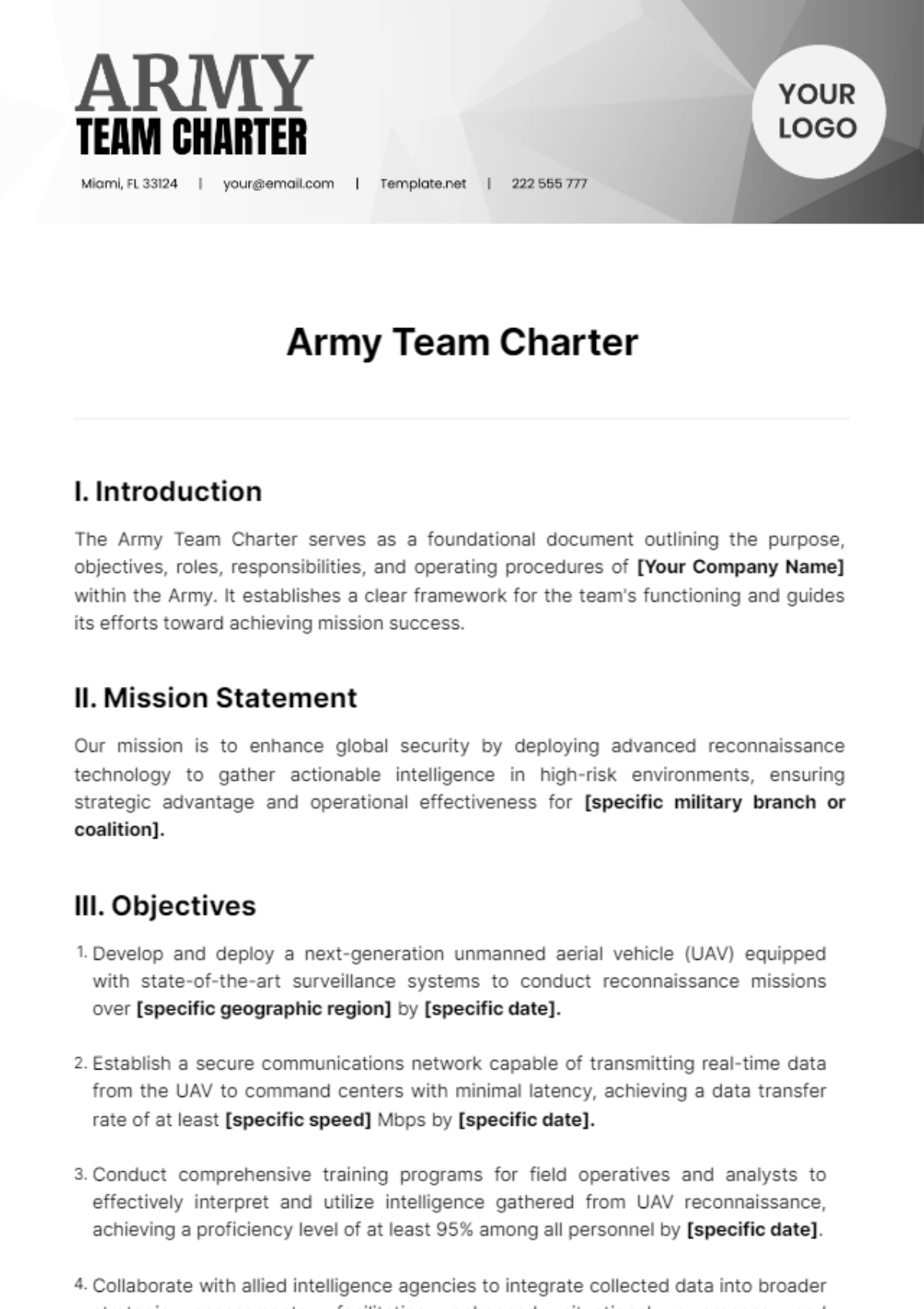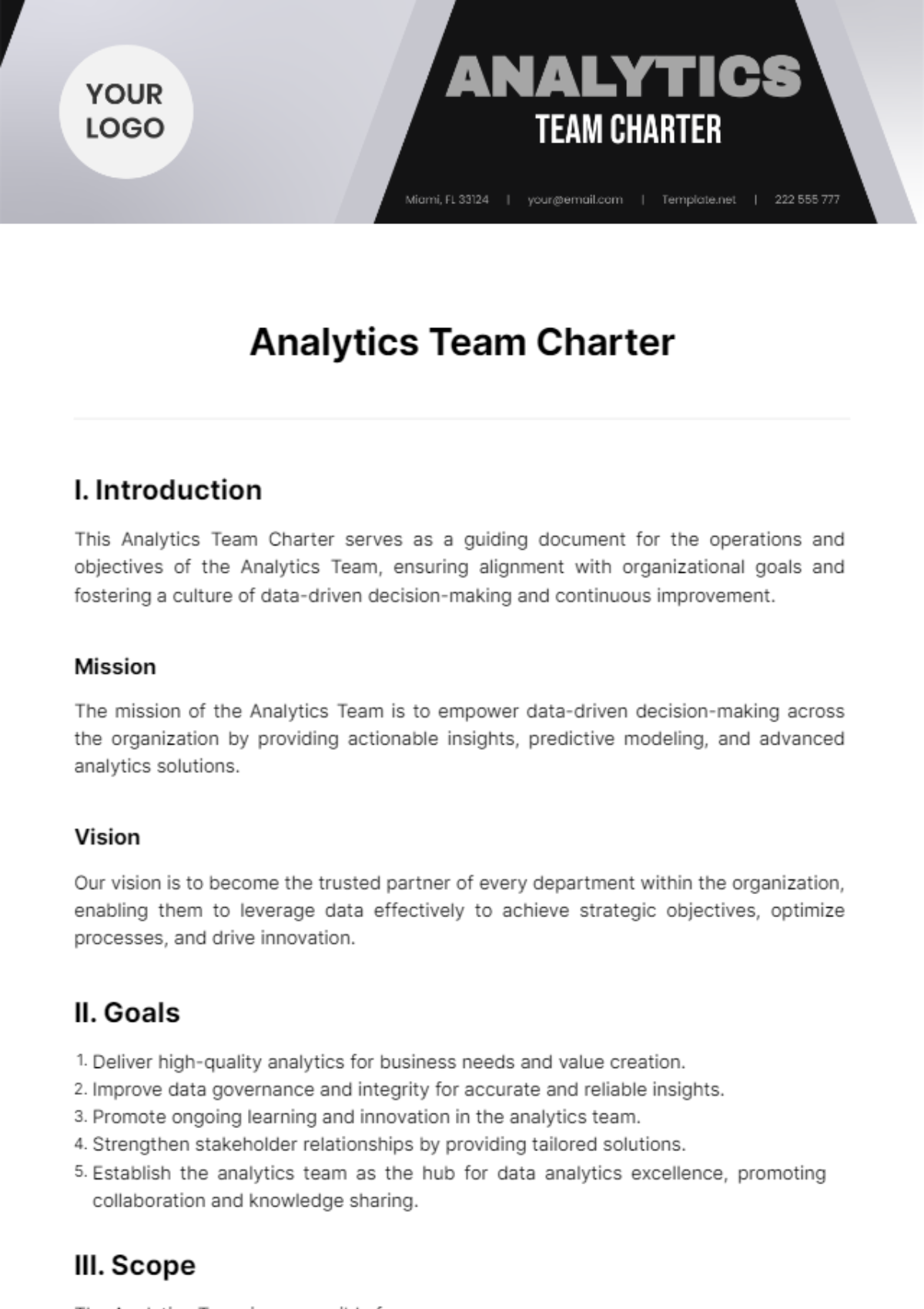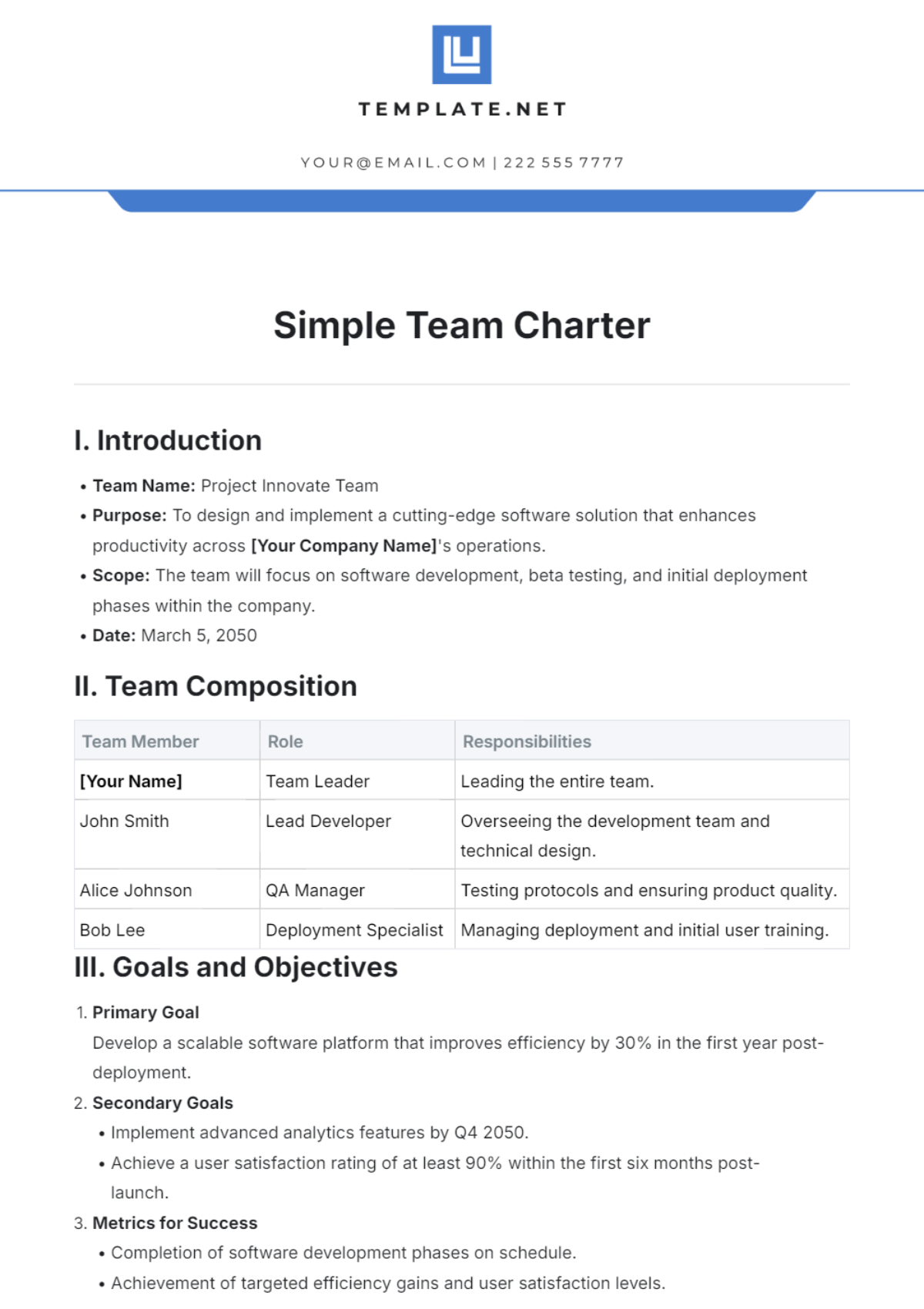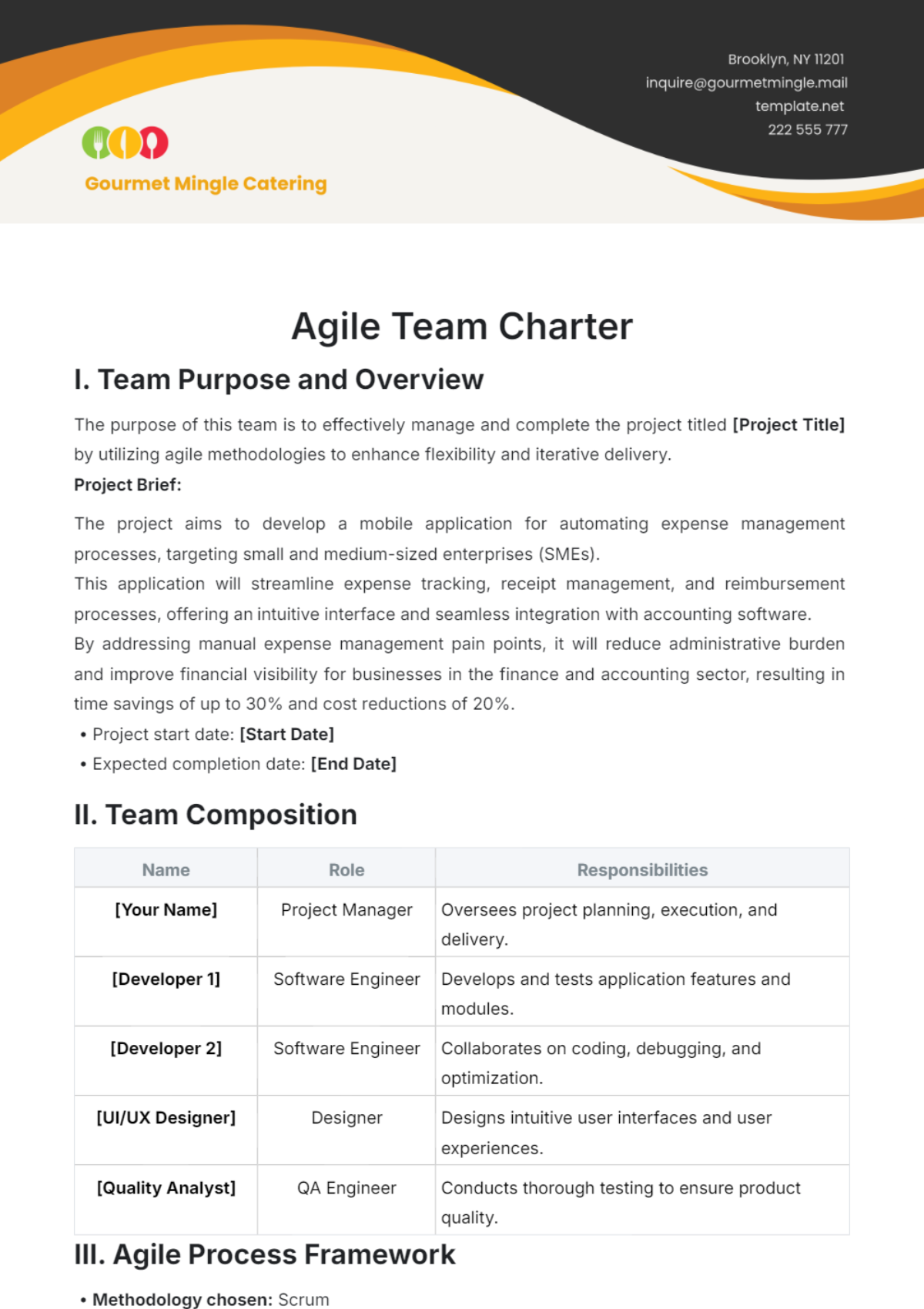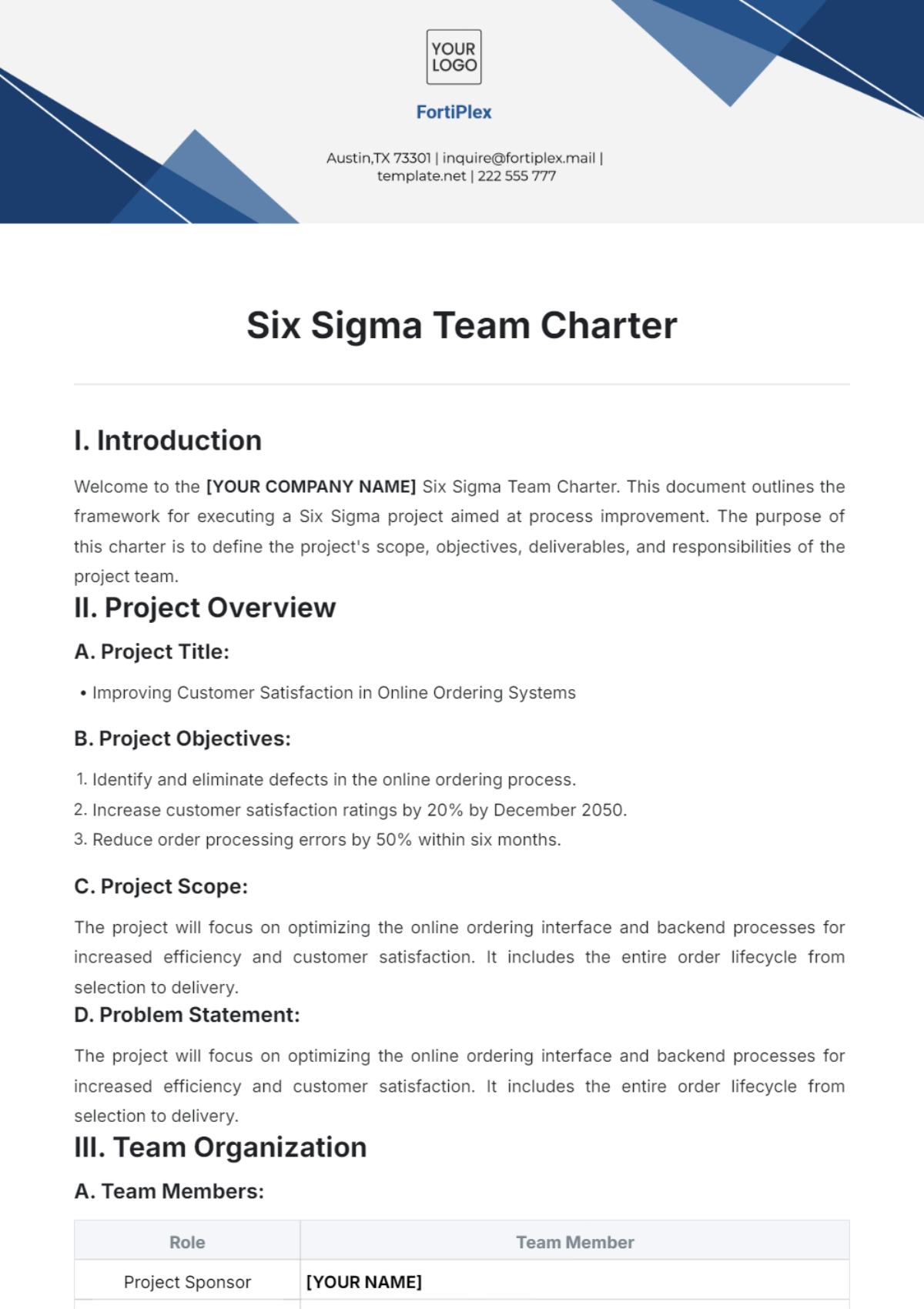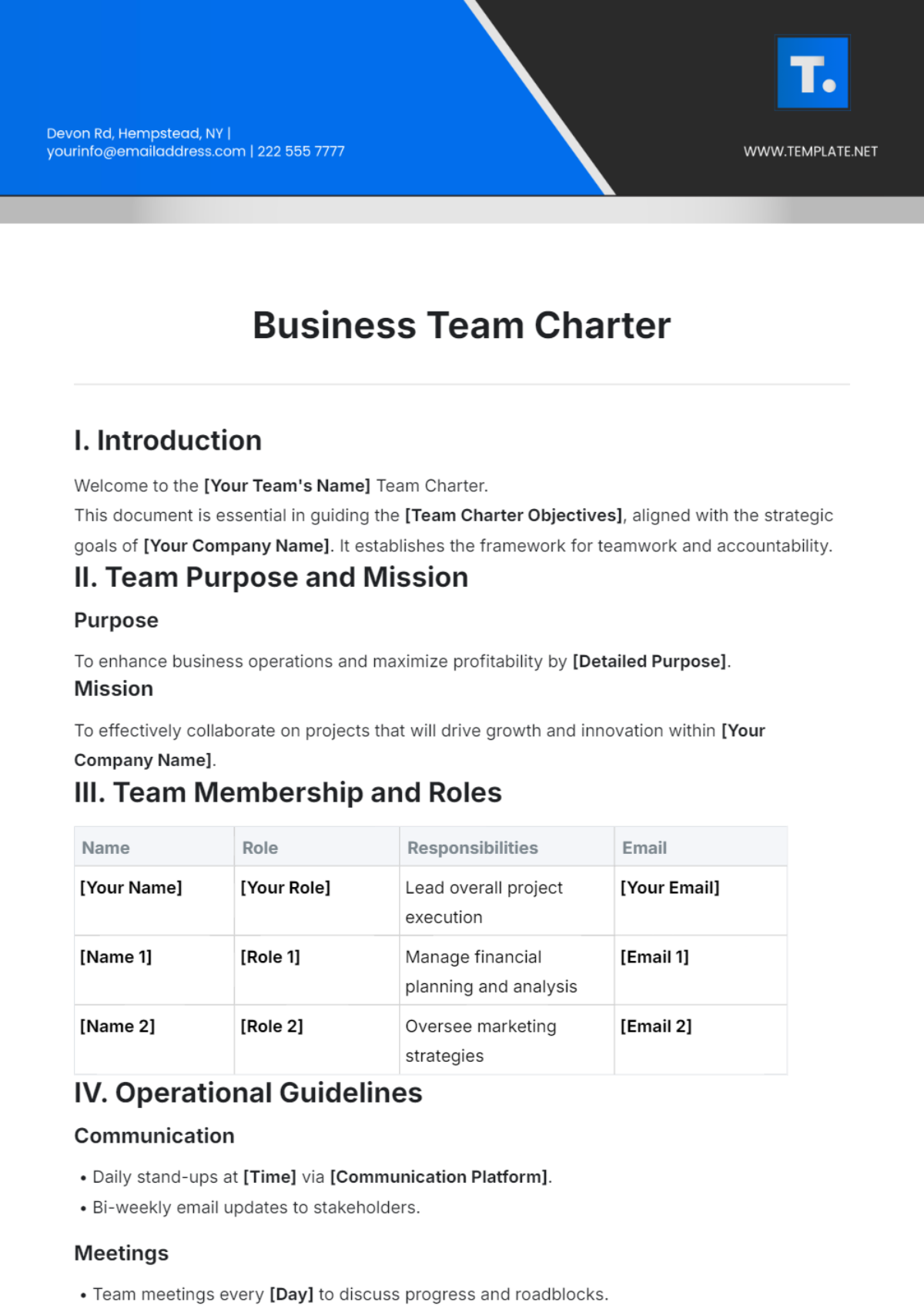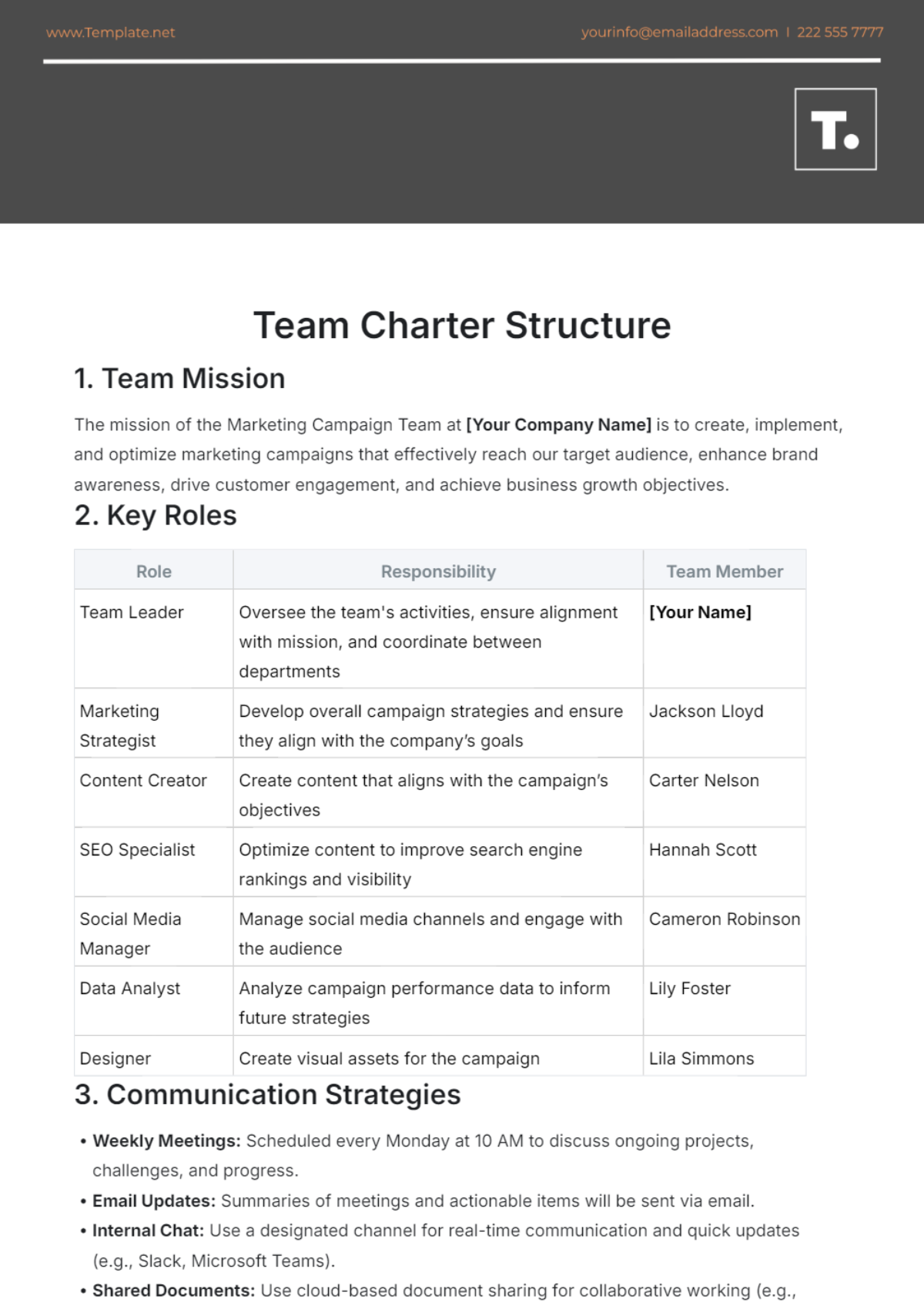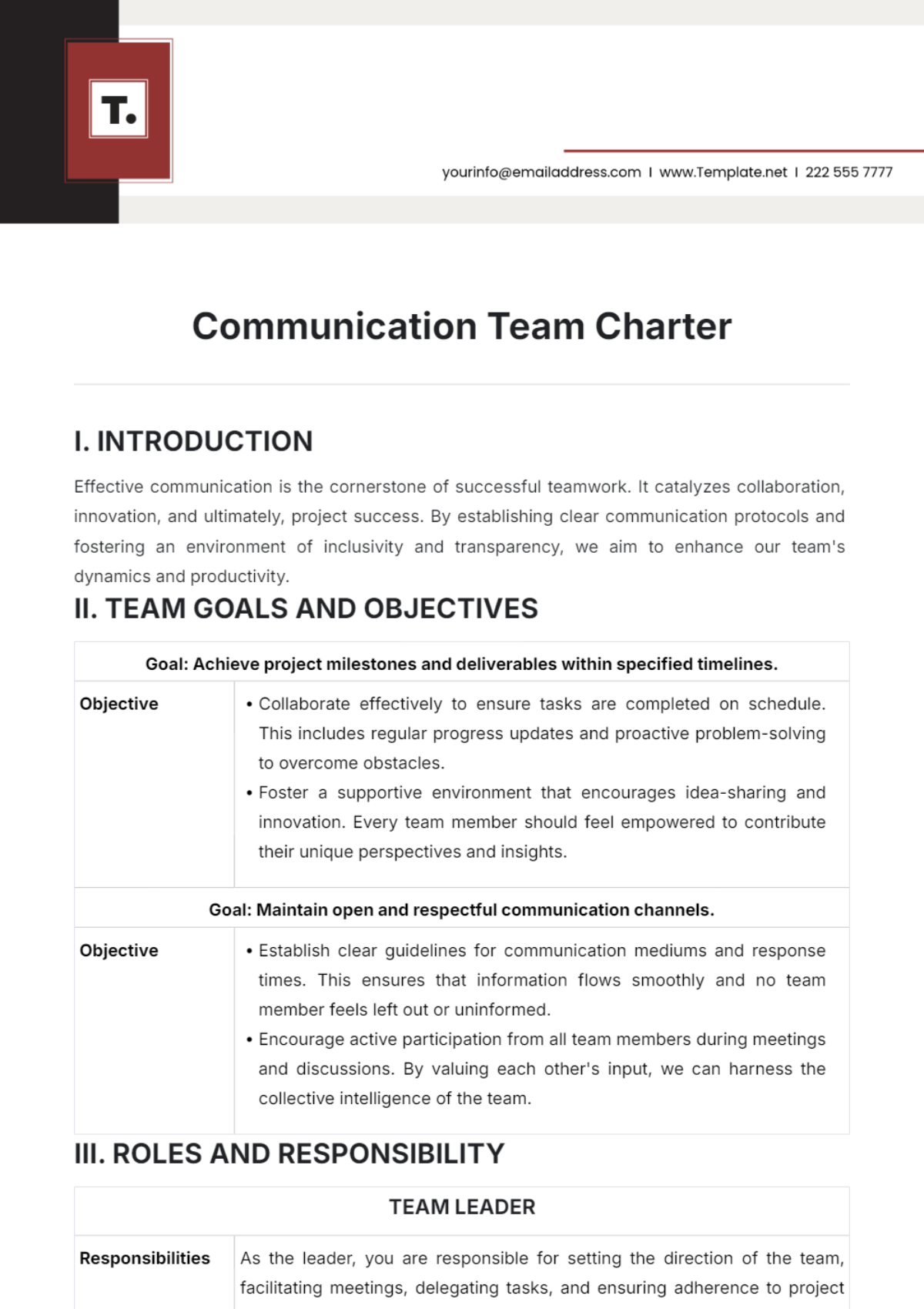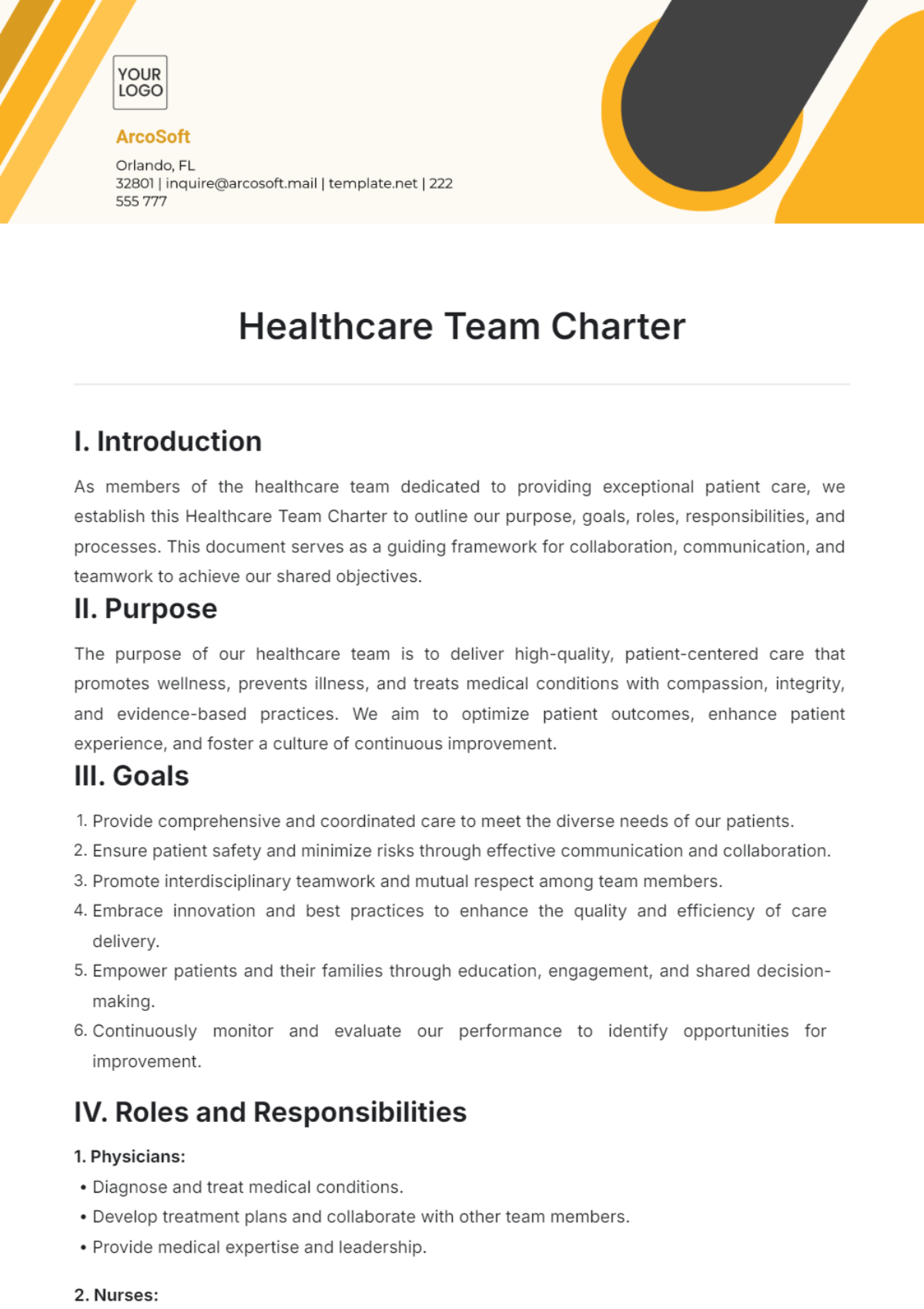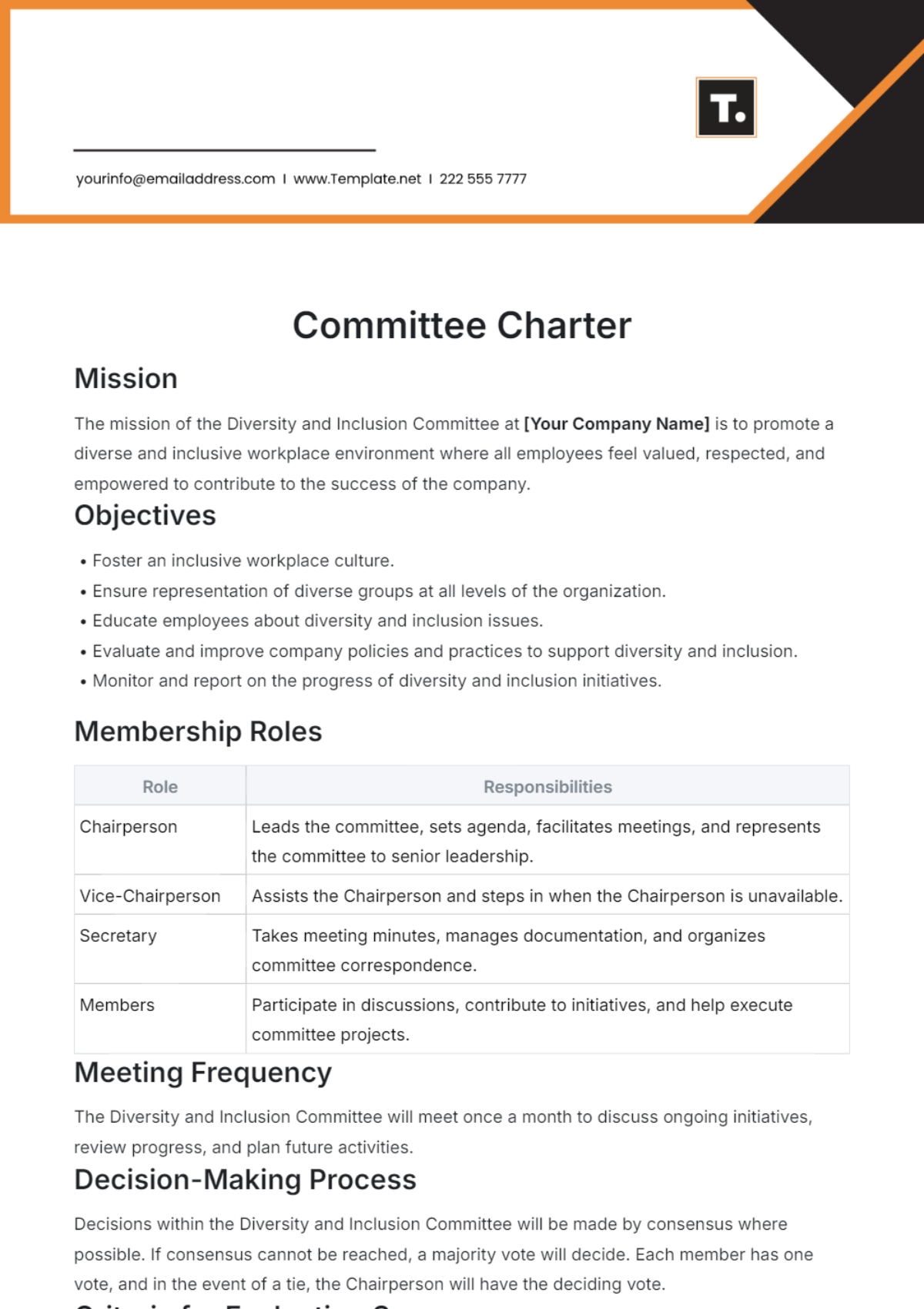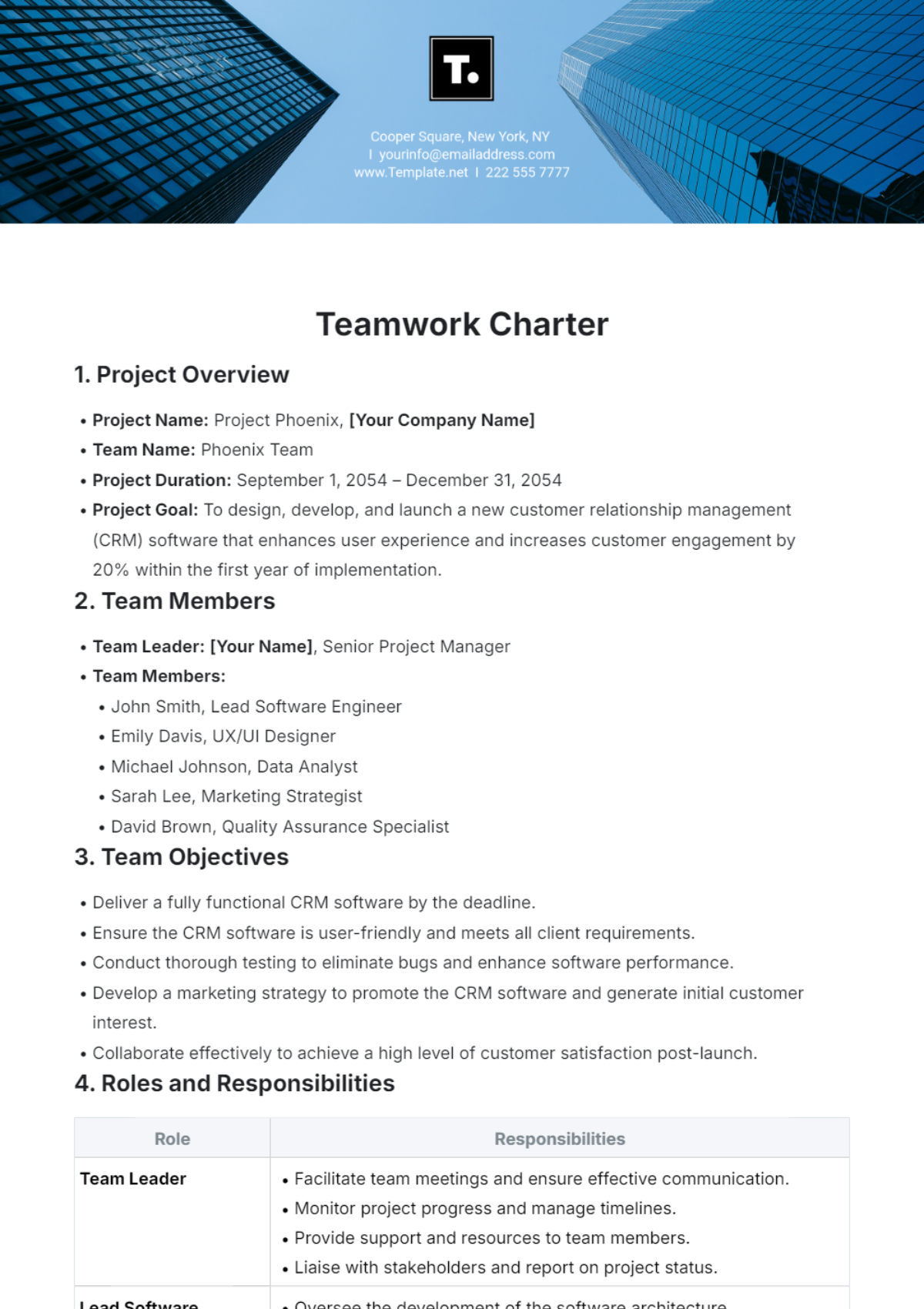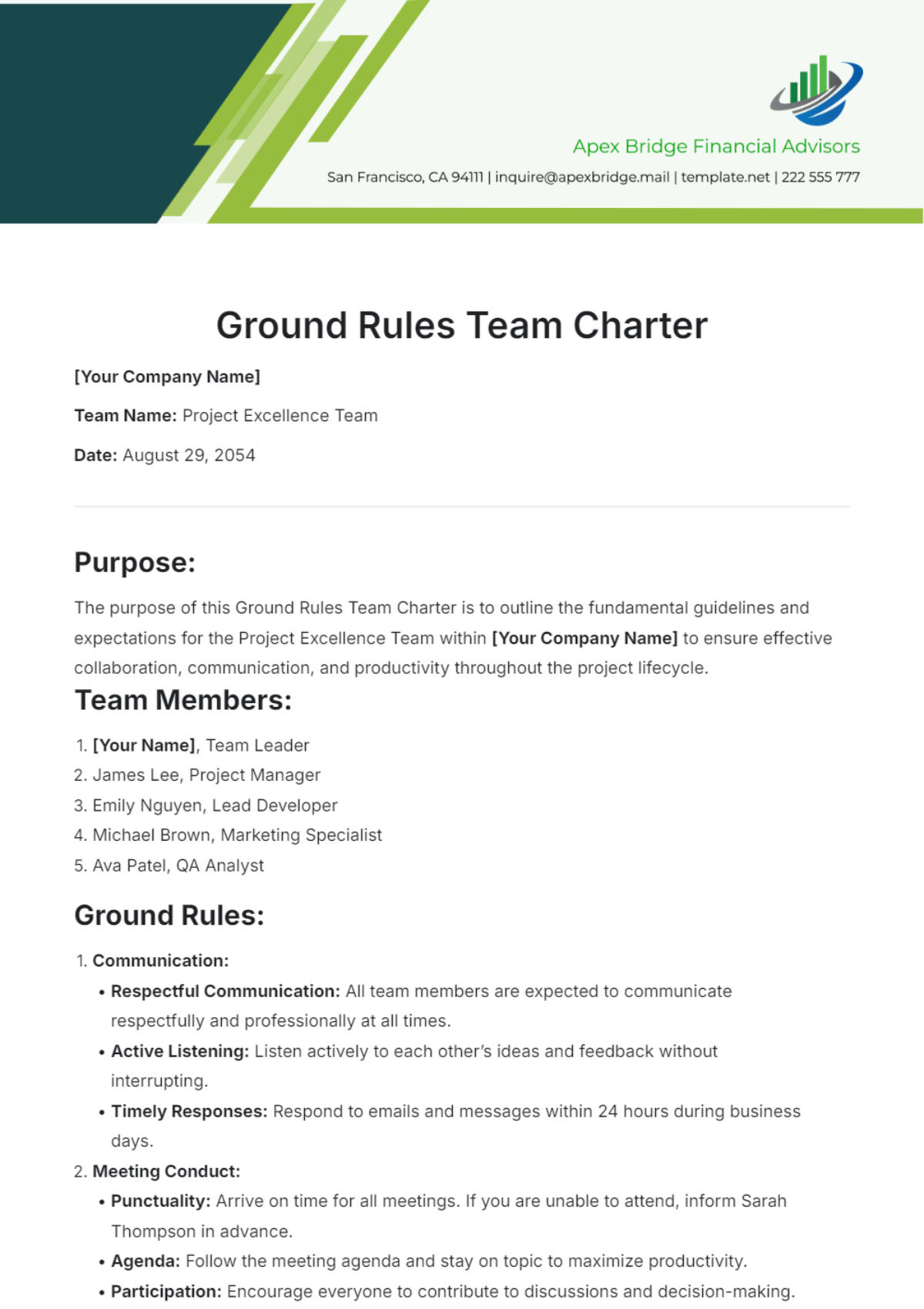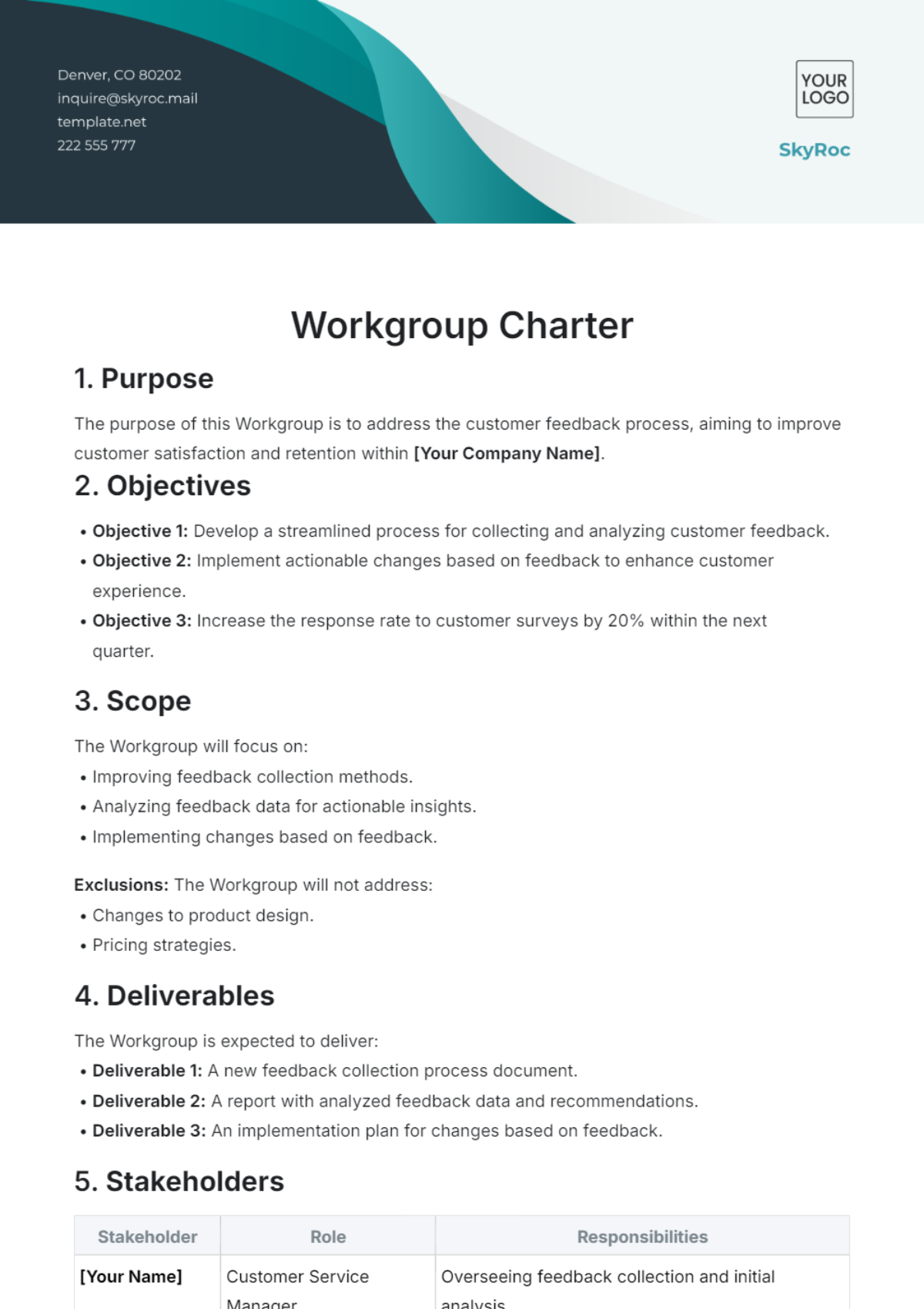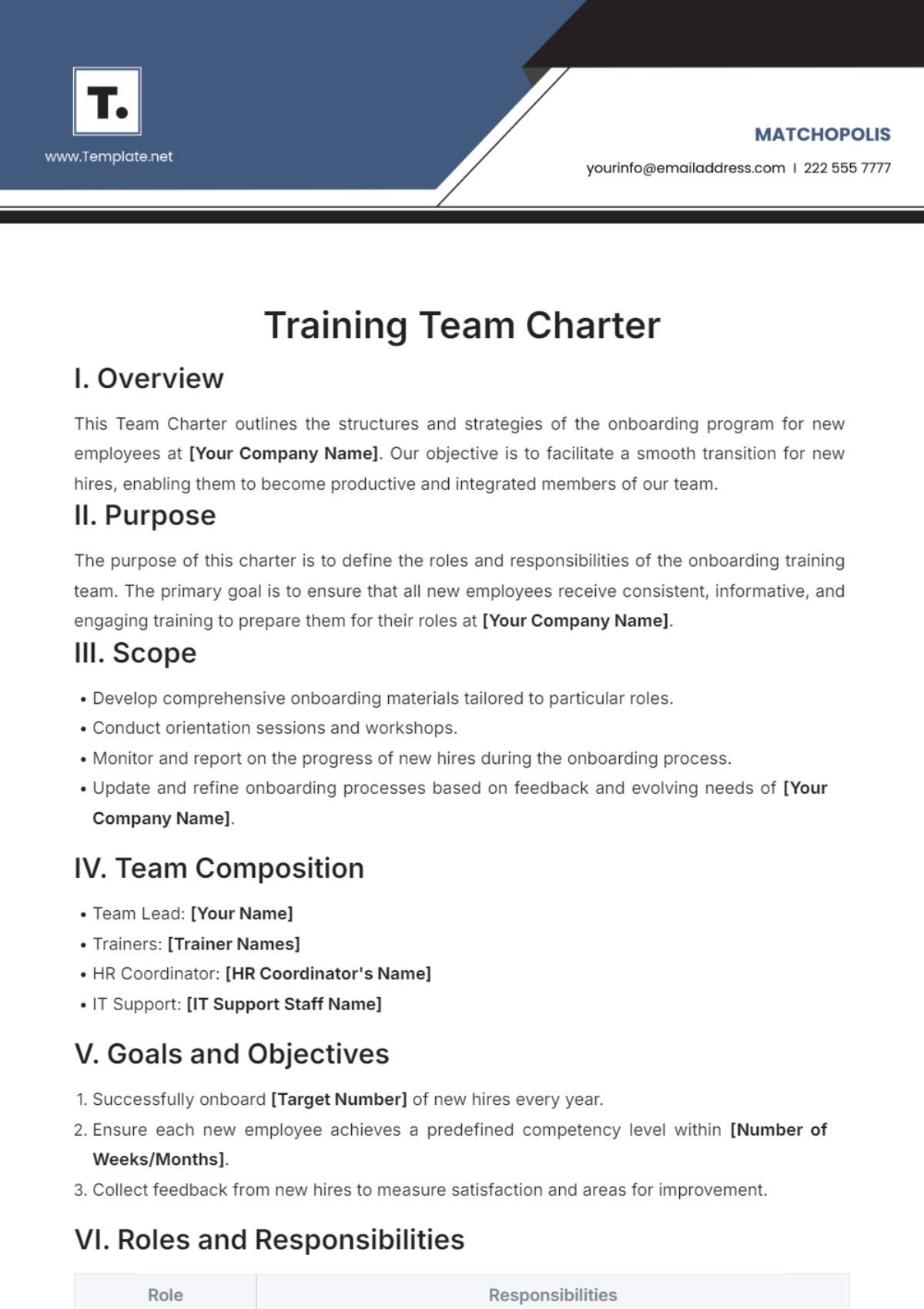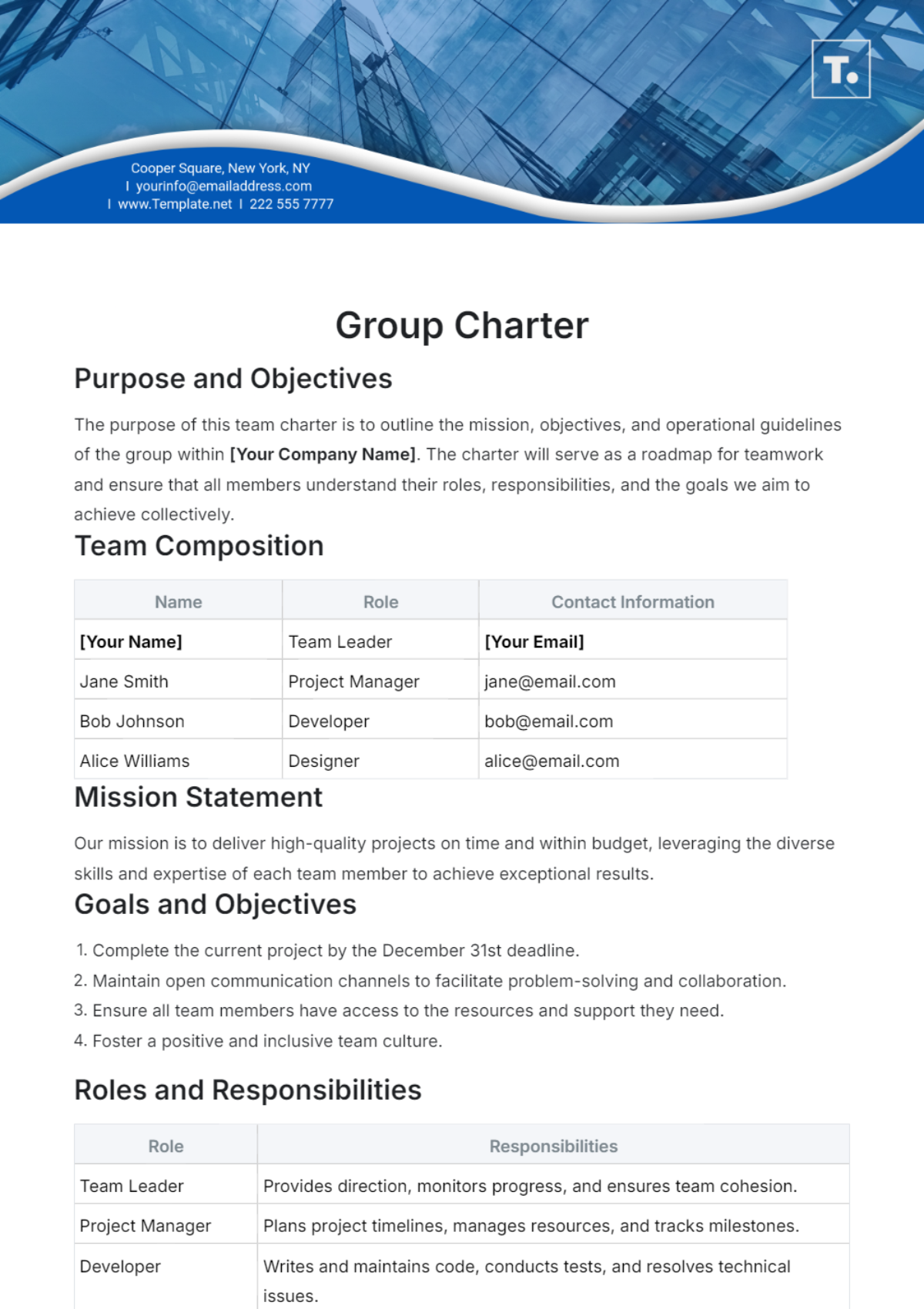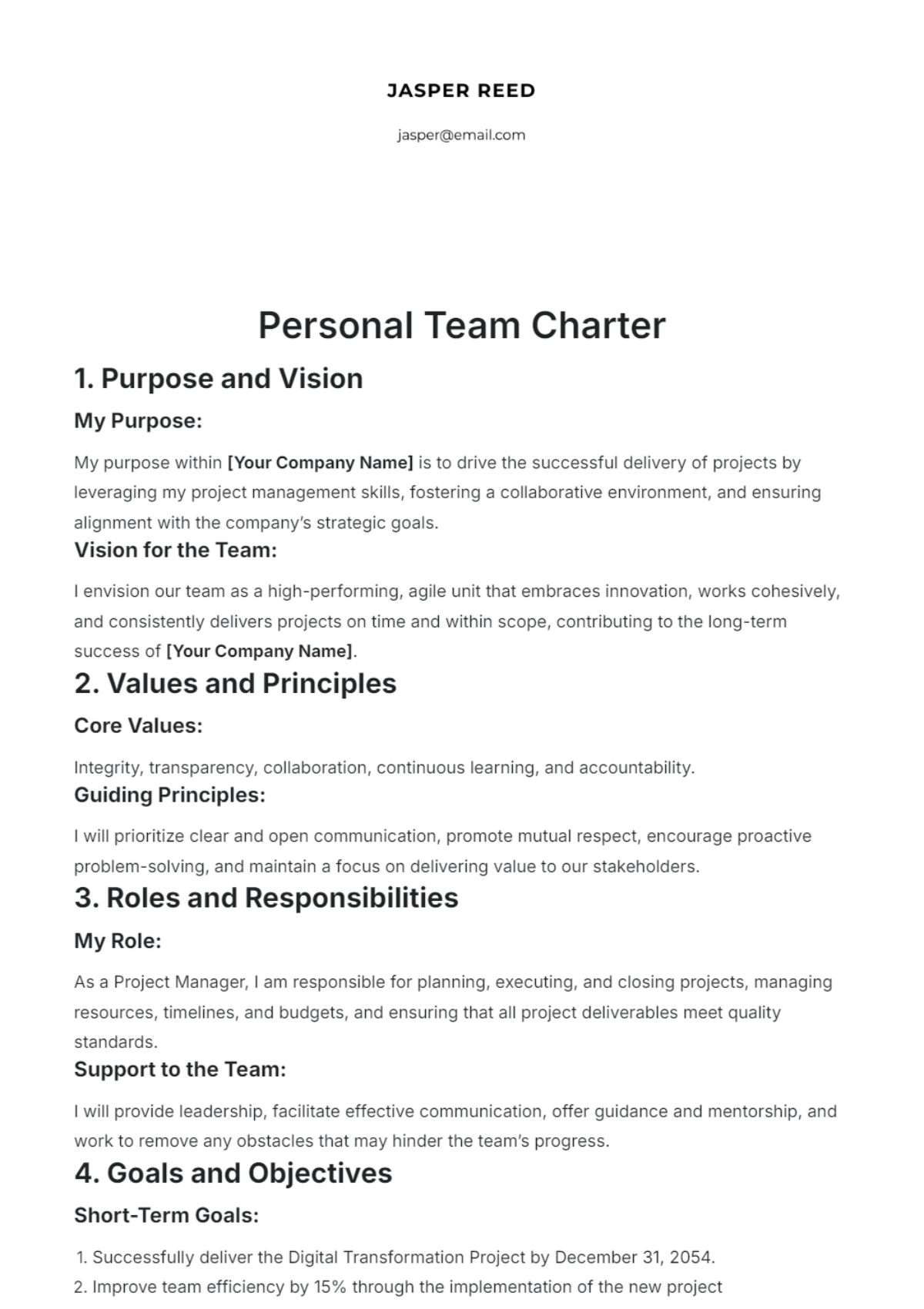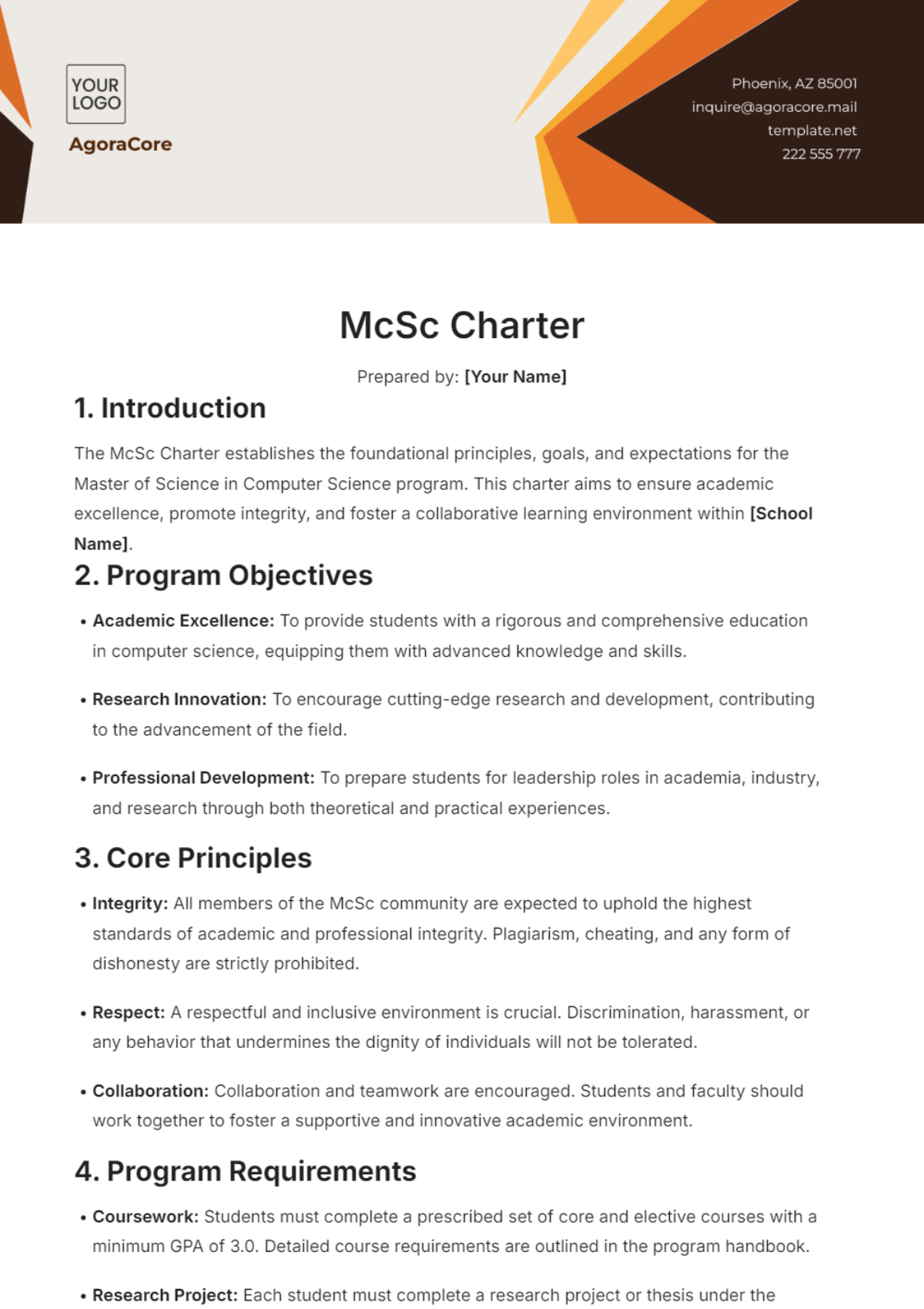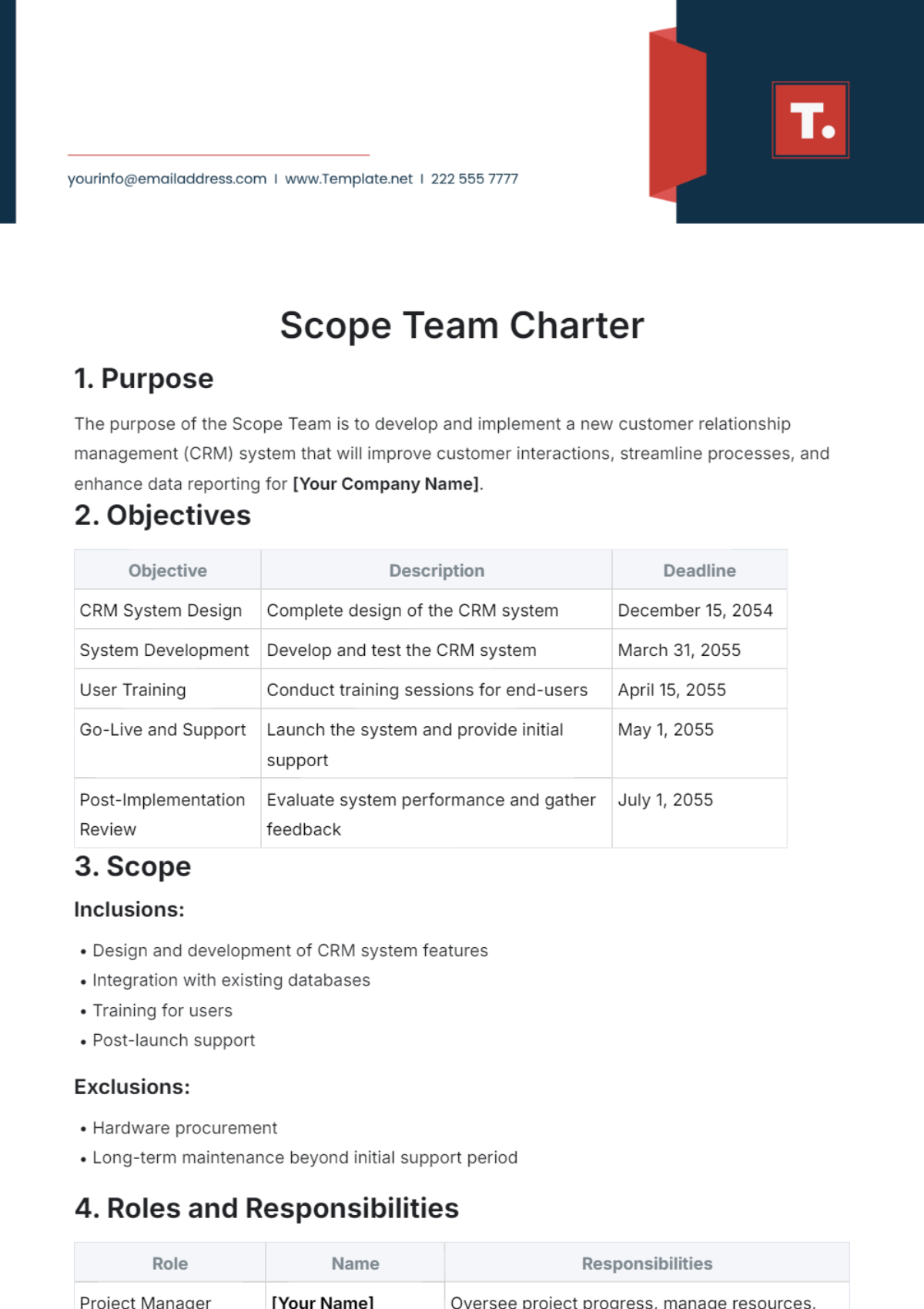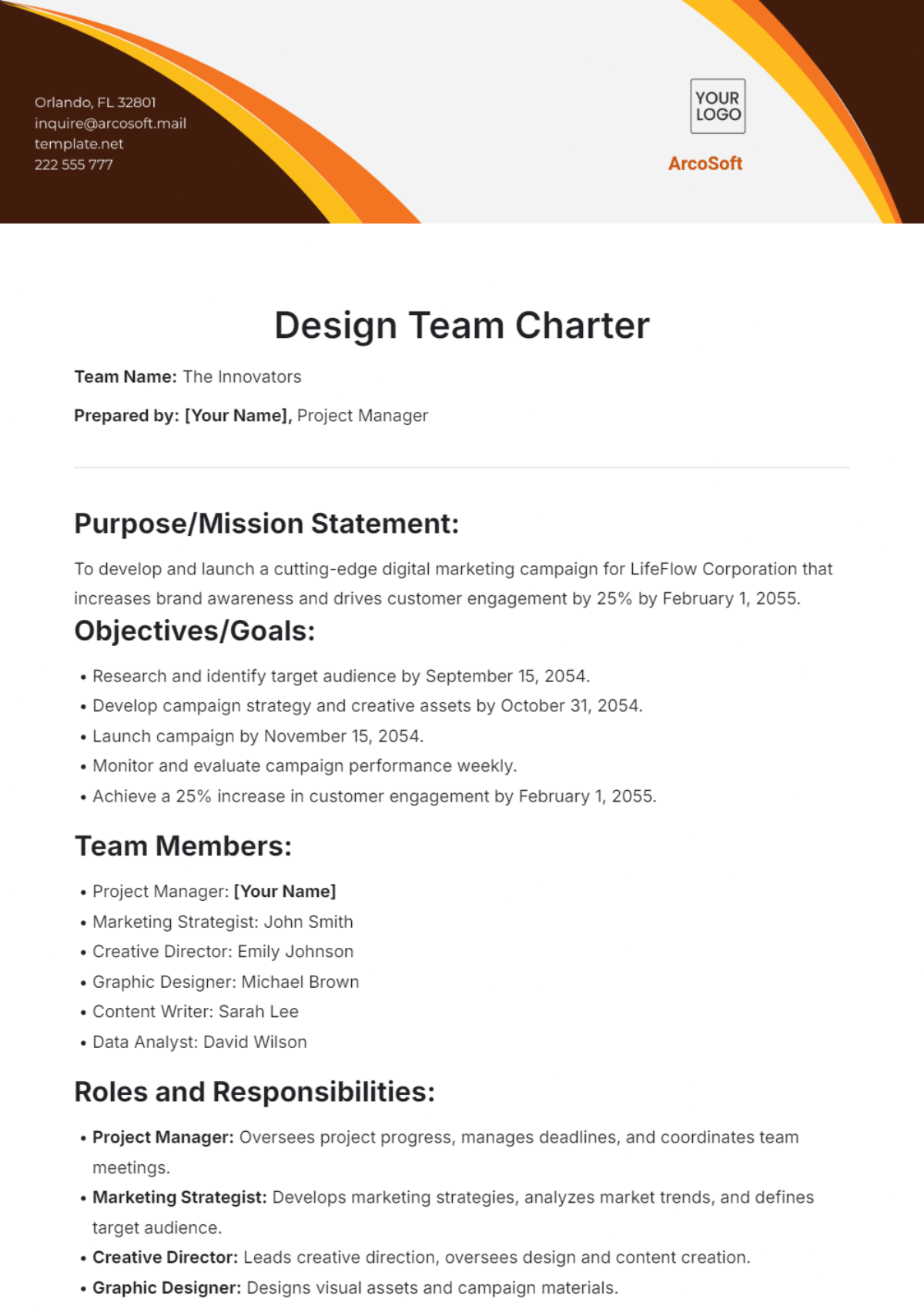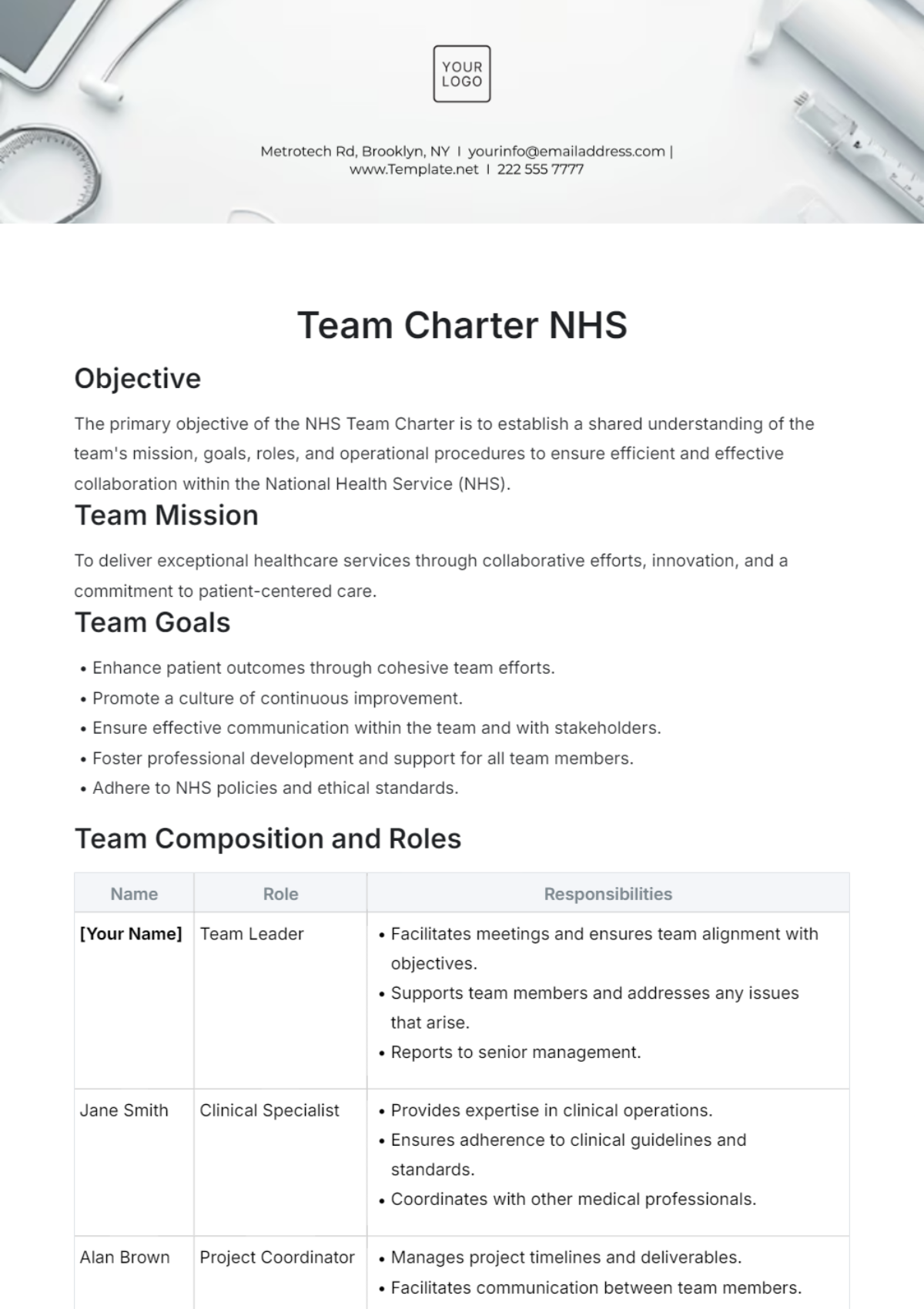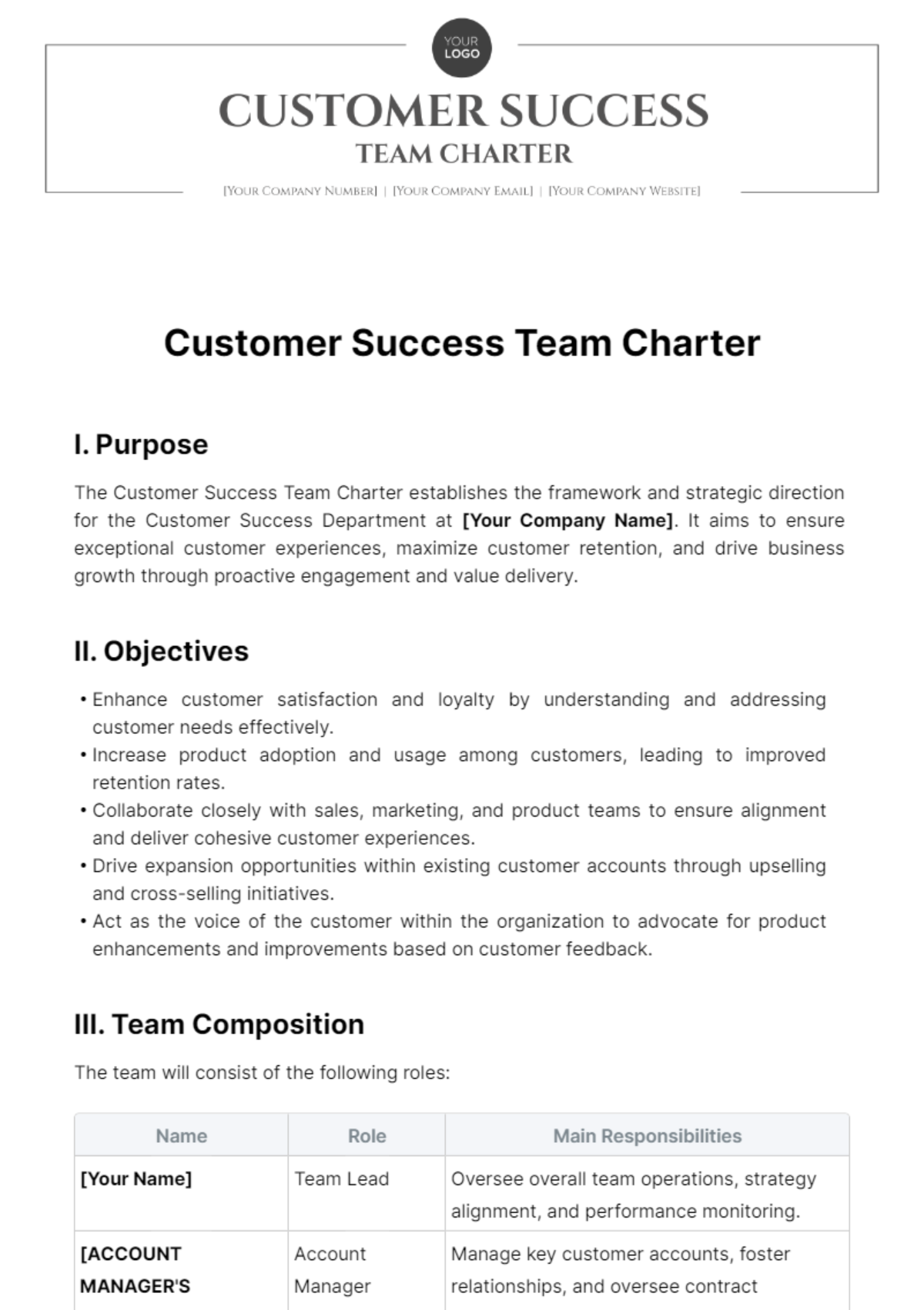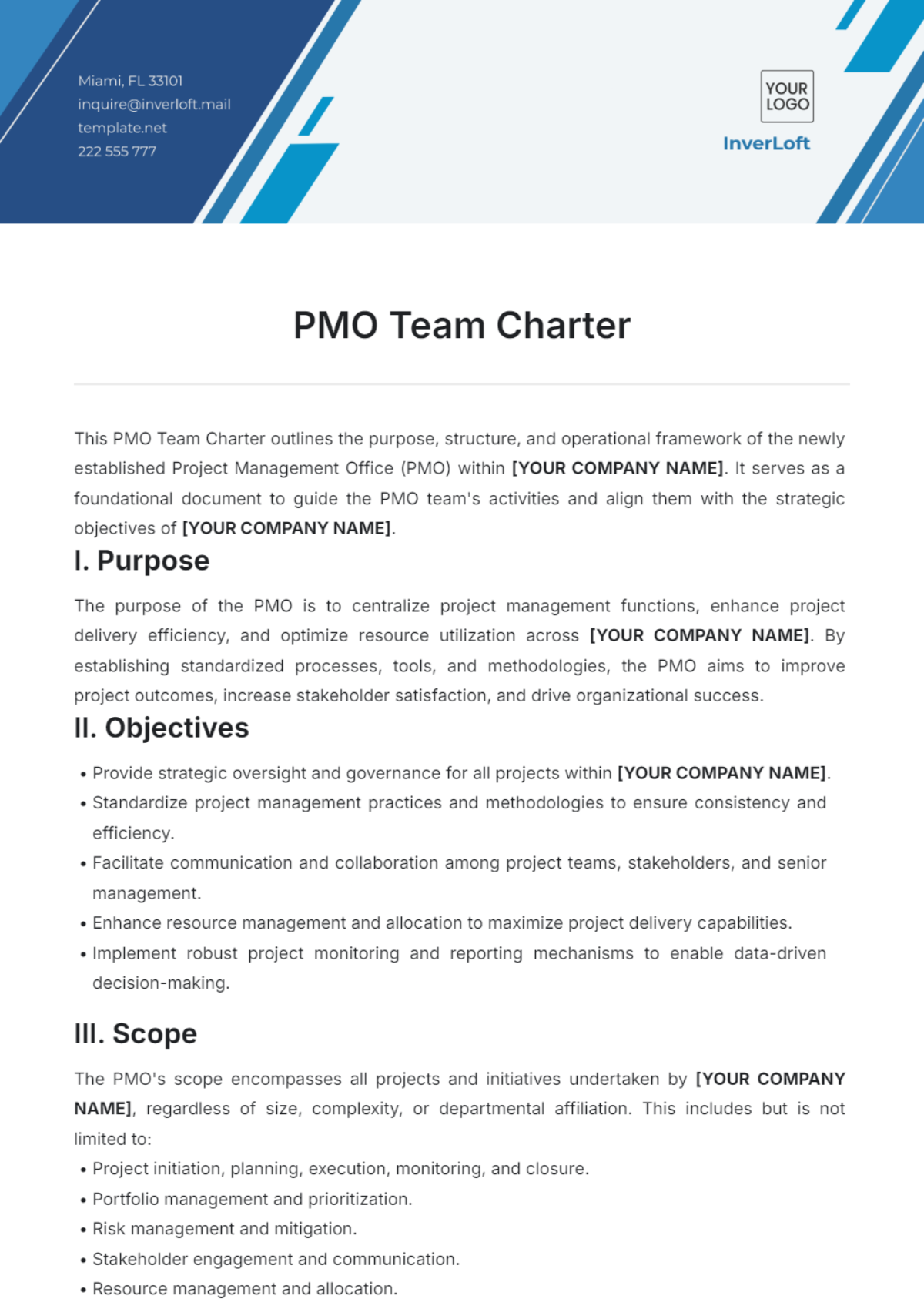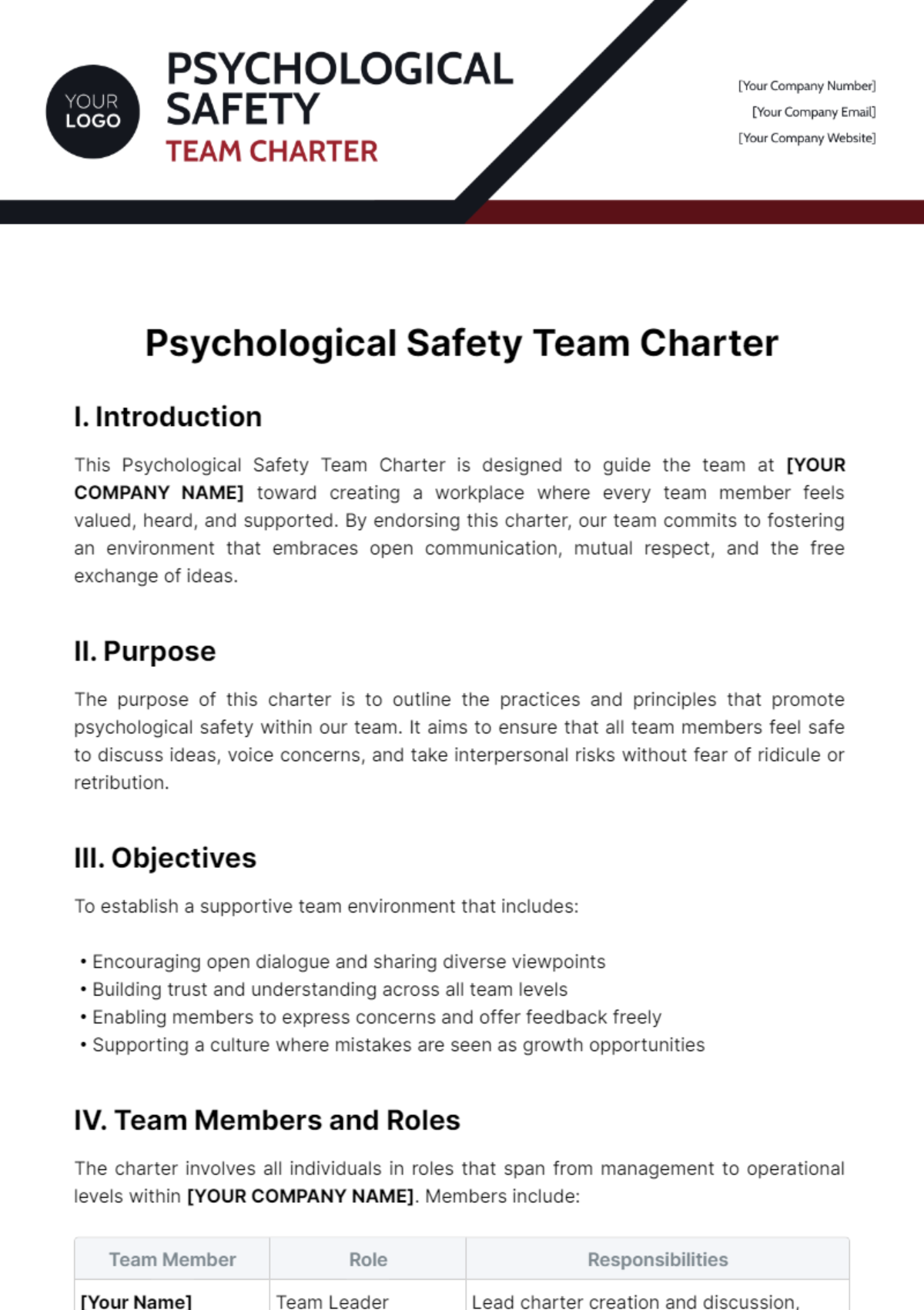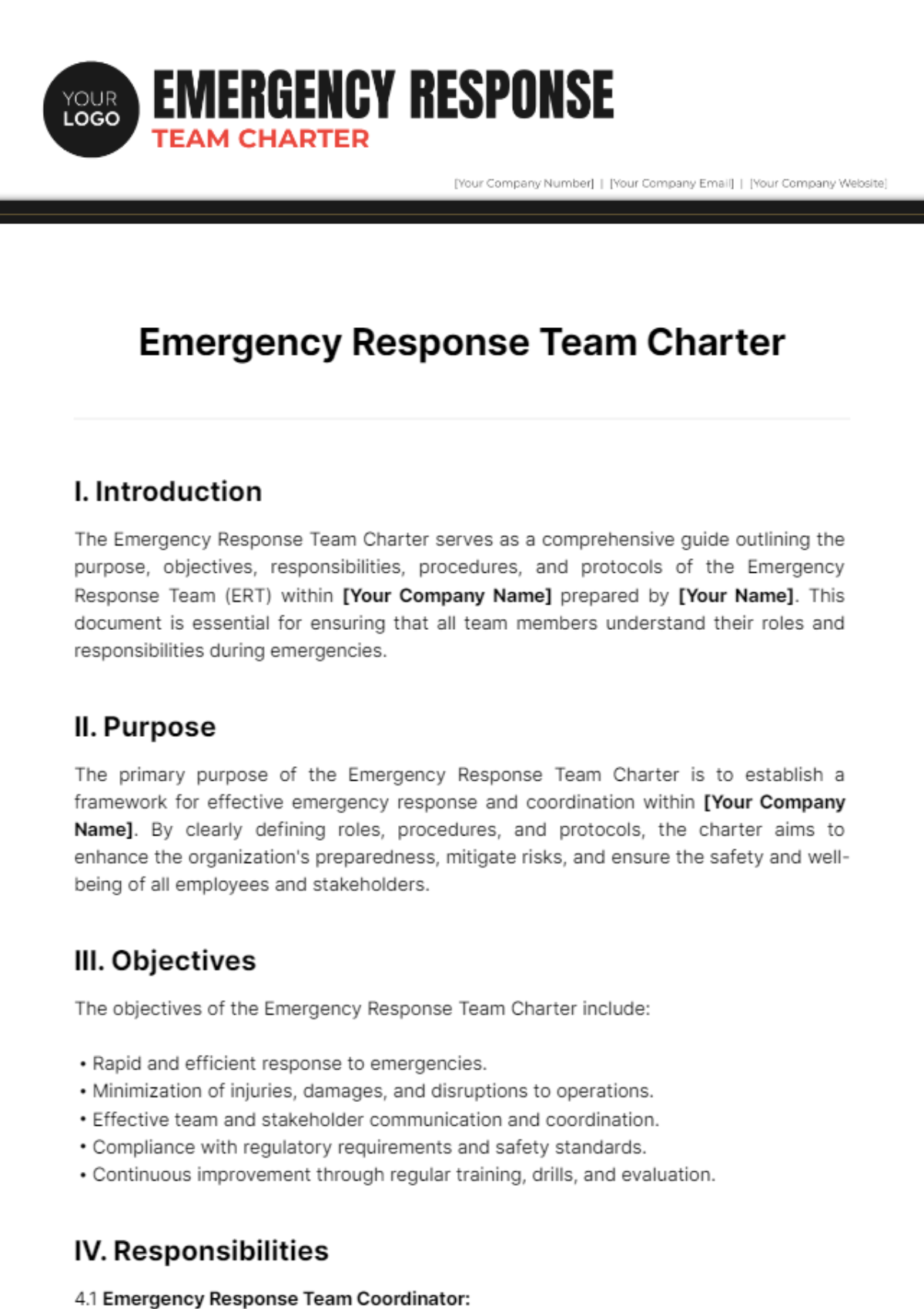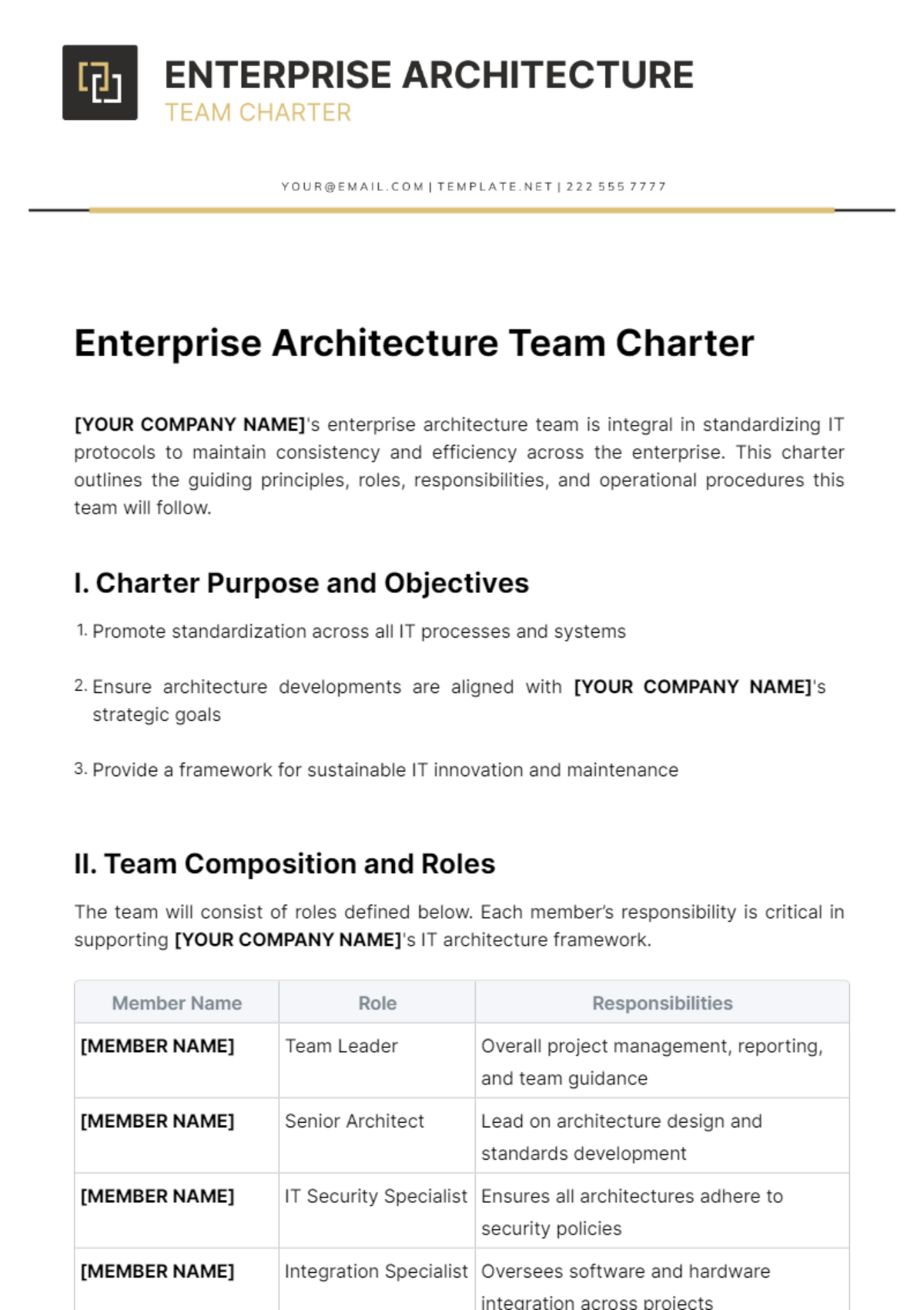Engineering Team Charter
I. Team Purpose
The primary purpose of our engineering team is to design, develop, and deliver high-quality software and hardware solutions that align with [YOUR COMPANY NAME]'s strategic goals and customer needs.
II. Team Objectives
Complete the development of Project Phoenix by [Date]
Enhance system performance by reducing processing time by 20% within the next six months.
Implement a continuous integration/continuous deployment (CI/CD) system for automated testing and deployment cycles by [Date]
Develop and maintain a high level of customer satisfaction through innovative solution design and proactive support.
III. Team Members and Roles
Name | Role | Responsibilities |
|---|---|---|
[MEMBER NAME] | Team Leader | Overall project management, team leadership, stakeholder communication. |
[MEMBER NAME] | Lead Developer | Technical guidance, development tasks assignment, code reviews. |
[MEMBER NAME] | Quality Assurance Engineer | Testing, bug tracking, and reporting, maintaining quality standards. |
[MEMBER NAME] | UI/UX Designer | Design interface, user experience optimization, graphic creation. |
IV. Team Resources
Resources available to the team include:
Access to the latest software development tools and platforms.
A dedicated budget of $100,000 for new hardware and software acquisition.
Training opportunities in cloud computing technologies such as AWS and Azure, as well as in agile methodologies, and attendance at relevant conferences or workshops such as AWS re: Invent and Agile Alliance conferences.
Support from the IT department for hardware setup and network configurations.
V. Communication Plan
The team will adhere to the following communication strategy:
Daily stand-up meetings to discuss progress and immediate priorities.
Weekly full team meetings for detailed project updates, held every Monday.
Monthly review meetings with stakeholders to ensure alignment with business objectives.
Use of Slack for day-to-day communication and document sharing.
VI. Team Rules and Expectations
The following rules and expectations are set to maintain a professional and productive work environment:
Adherence to [YOUR COMPANY NAME]'s code of conduct and operational policies.
Respect for diverse ideas and perspectives.
Maintaining confidentiality and integrity in handling sensitive information.
Completion of tasks and responsibilities within agreed timelines.
VII. Risk Management
Potential risks include:
Delays in deliverables due to unforeseen technical challenges.
Resource constraints impacting project scope or timelines
Changes in project scope initiated by stakeholders leading to scope creep.
Risk mitigation strategies:
Frequent reviews and updates to the project plan.
Proactive resource allocation and management.
Clear communication of project boundaries and requirements adjustments.
VIII. Performance Measurement
Performance will be measured through several quantitative and qualitative metrics, such as:
Project completion rate as per the defined schedule.
Stakeholder feedback scores relating to system performance and user satisfaction.
Number of post-release bugs or issues reported.
IX. Approval
This charter is approved by the following head of department:

Name: [Your Name]
Date: [APPROVAL DATE]
